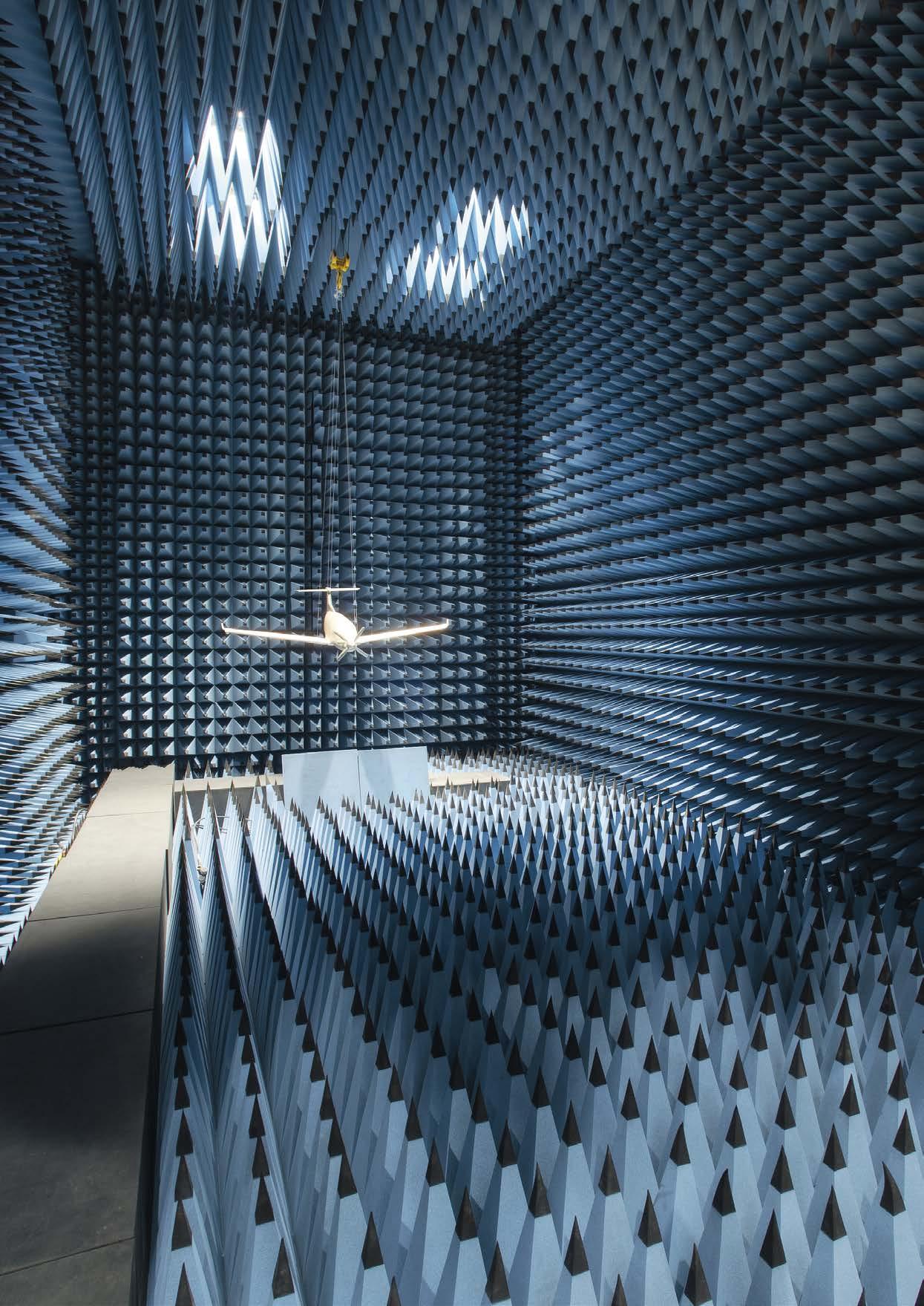Science and Technology



You are holding the new research brochure from armasuisse Science and Technology. This publication aims to share scientific and often complex subject matter with you in a way that is as comprehensible and appealing as possible. That’s why we have decided on a new appearance for this printed version, which is more like a magazine with vivid images and short interviews to break up the flow of text.
In these articles, we would like to present the areas involved in the diverse and interesting tasks we perform every day. What’s more, we will show you the successes and benefits which result from the research with our partners.
You will discover, for instance, how exchanging sensitive information by satellite is becoming more secure thanks to the work of our experts. Or how new tracking systems can detect gunfire even where obstructions are in the way, giving pilots early warning of danger. We hope to be able to show you that the statement “research is an investment in the future” applies to the DDPS as a whole and especially to armasuisse.
I hope you enjoy reading this new brochure. And if you feel moved by any of the articles to ask questions or to share information, please do not hesitate to contact us. We at armasuisse Science and Technology look forward to your feedback and reactions.
Dr Thomas Rothacher, Deputy National Armaments Director and Head of armasuisse Science and Technology
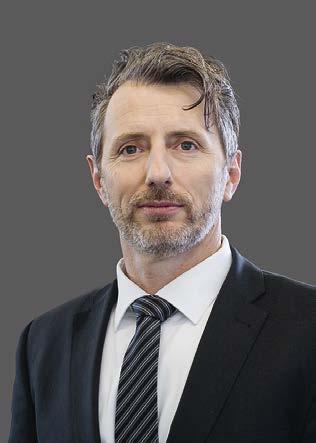





Both private individuals and companies benefit from fast satellite communication today. Researchers at the armasuisse Cyber Defence Campus have found a solution for transferring data by satellite in a way that is rapid but nonetheless protected.
The digital twin of the Swiss population to support the battle against Covid-19

SimCo-19 is an application that provides realistic predictions on the Covid-19 situation in Switzerland, helping the fight against the pandemic and answering further questions too.
The Swiss Armed Forces’ protective vests are being put through a new test procedure to ensure better safety for troops.
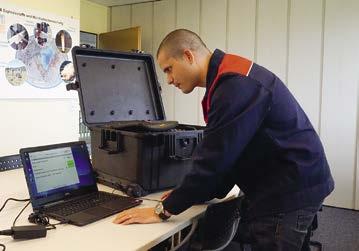
armasuisse research, a success model? P. 04
Foresight, technologies and science fiction P. 18
Swiss robotics for the disaster relief of the future
P. 26
Cooperation during the pandemic P. 36
Performance capability in aviation P. 40
Sensor systems
Detecting and localising gunfire P. 08
Cyber info
Satellite communication P. 12
Communication systems

We bring the whole of Switzerland into the laboratory P. 32
Ballistics


Body armour put to the safety test P. 44
Simulation
SimCo-19 P. 22
LEGAL NOTICE
Publisher: armasuisse Science and Technology, Feuerwerkerstrasse 39, CH-3602 Thun, wt@armasuisse.ch


Realisation and design: by the way communications AG Image credits: unless otherwise stated: Source VBS/DDPS, Getty Images, Adobe Stock, Fabrice Ducrest (University of Lausanne)
Printing: Federal Office for Buildings and Logistics FOBl | Circulation: 250 copies Reprints: only with approval of editorial department | ISBN 978-3-9525175-5-0
Interviews
P. 16 | P. 30
When I was out on a Sunday walk with my daughter some time ago she asked why armasuisse does research at all and how, as the person in charge of Research Management, I could tell if armasuisse is successful at it. Maybe you too have found yourself in a situation where it’s not quite so easy to answer simple questions. That’s how I felt on this Sunday walk.
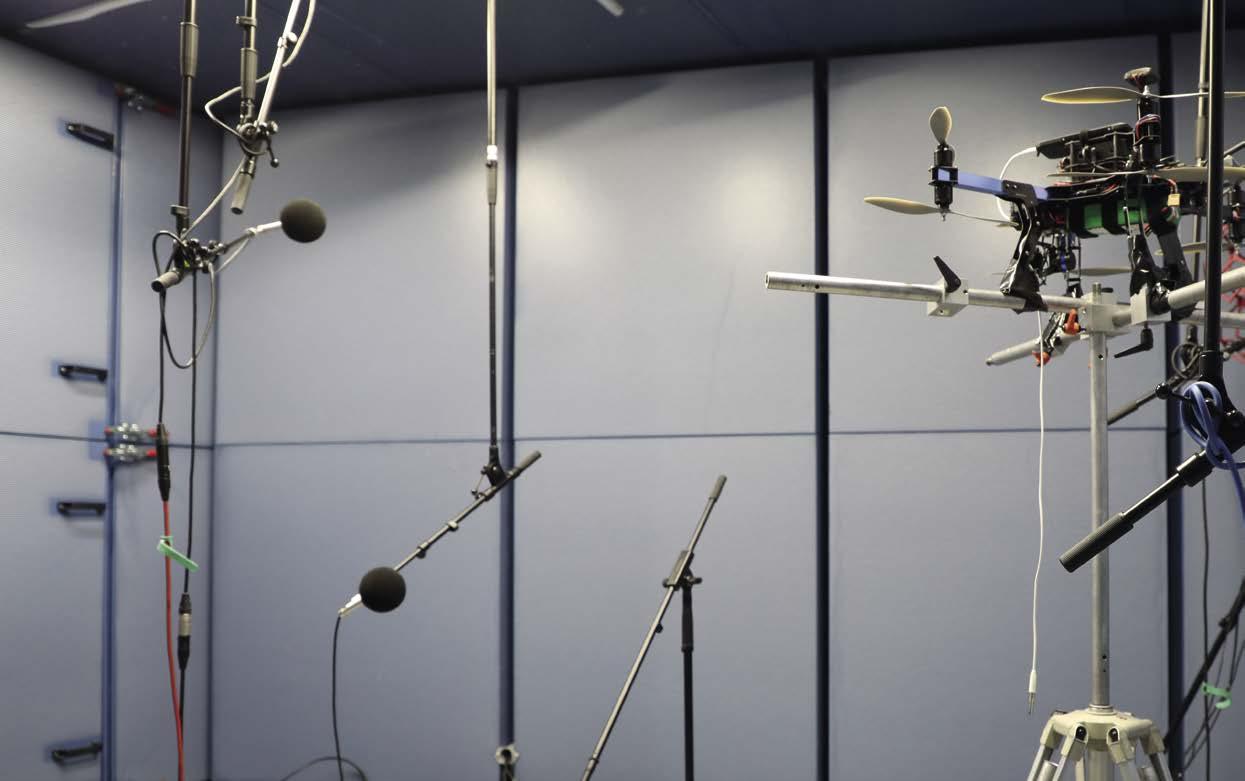
Well, armasuisse does research to assess how technology trends are affecting on the future work of the Armed Forces.
If you look at how technologies develop from the point of view of the Armed Forces, you cannot rule out the possibility that, while they make the country’s security duties easier, they may also represent a danger to public safety. Both scenarios are possible. That’s why both aspects need to be taken into consideration when assessing technology trends and their consequences. There is also the fact that in many areas technological developments are driven by civilian players. But they can still be relevant for security forces and actually be deployed. We call them in cases like this dual-use technologies.

Dual-use technologies are already ubiquitous today in information and communication. They have had a permanent impact on our social behaviour and our economy. Traditional business models are increasingly disappearing, a new digital economy has emerged and information has become merchandise with a monetary value. Society is facing a change in values and profound insecurities. In contrast to civil society, many Armed Forces have only just started to implement the digital transformation. This is an extremely demanding process. Digital change will fundamentally affect the tasks, structures and processes of security forces. The consequences cannot be foreseen. At times of such dramatic fundamental changes, scientifically-based knowledge is key to taking good decisions on how the Armed Forces should be structured in the future. armasuisse’s research ensures that the technological expertise required for this purpose is in place. One can justifiably ask whether research for the security forces could not also
Research demonstrators show the potential of technologies. Here we see a 360° camera for simultaneously observing the surroundings in all directions in real time.
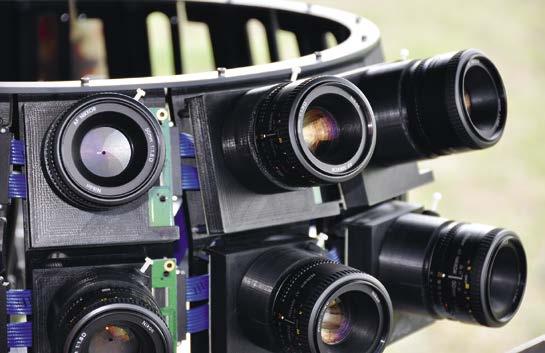
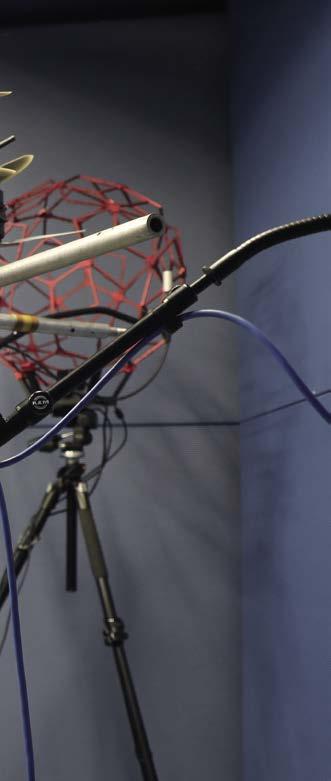
Employee skills and inhouse laboratory as well as measurement infrastructure are essential for independent expertise. Research is the basis for building up these skills.
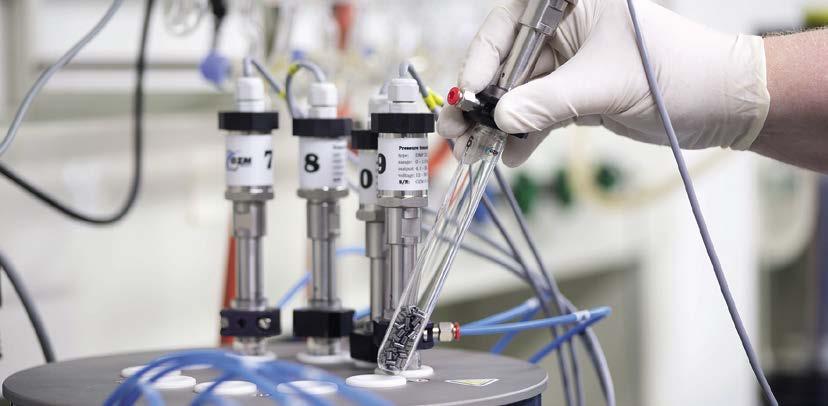
be outsourced to industry or even universities, as is already the case in non-technical sciences. But the Swiss university landscape is broadly civilian and more focused on scientific excellence than specific applications. It is also organised by scientific disciplines. Knowledge of how security forces operate is only present in a very fragmented way. Most Swiss universities therefore lack background knowledge on potential applications of technologies in the field of security.
In industry, on the other hand, the picture is a little different. There are sectors providing security equipment and armaments. To remain competitive, these sectors are strongly focused on further developing their products and they have very valuable, in-depth knowledge. However, industry will never be able or willing to cover the range of technologies relevant for security forces in its research and development departments. This is where armasuisse comes into play.

At times of such dramatic fundamental changes, scientificallybased knowledge is key to taking good decisions on how the Armed Forces should be structured in the future.
We conduct regular assessment surveys among our partners and the recipients of our expertise to determine the extent to which armasuisse’s research goal is being achieved.
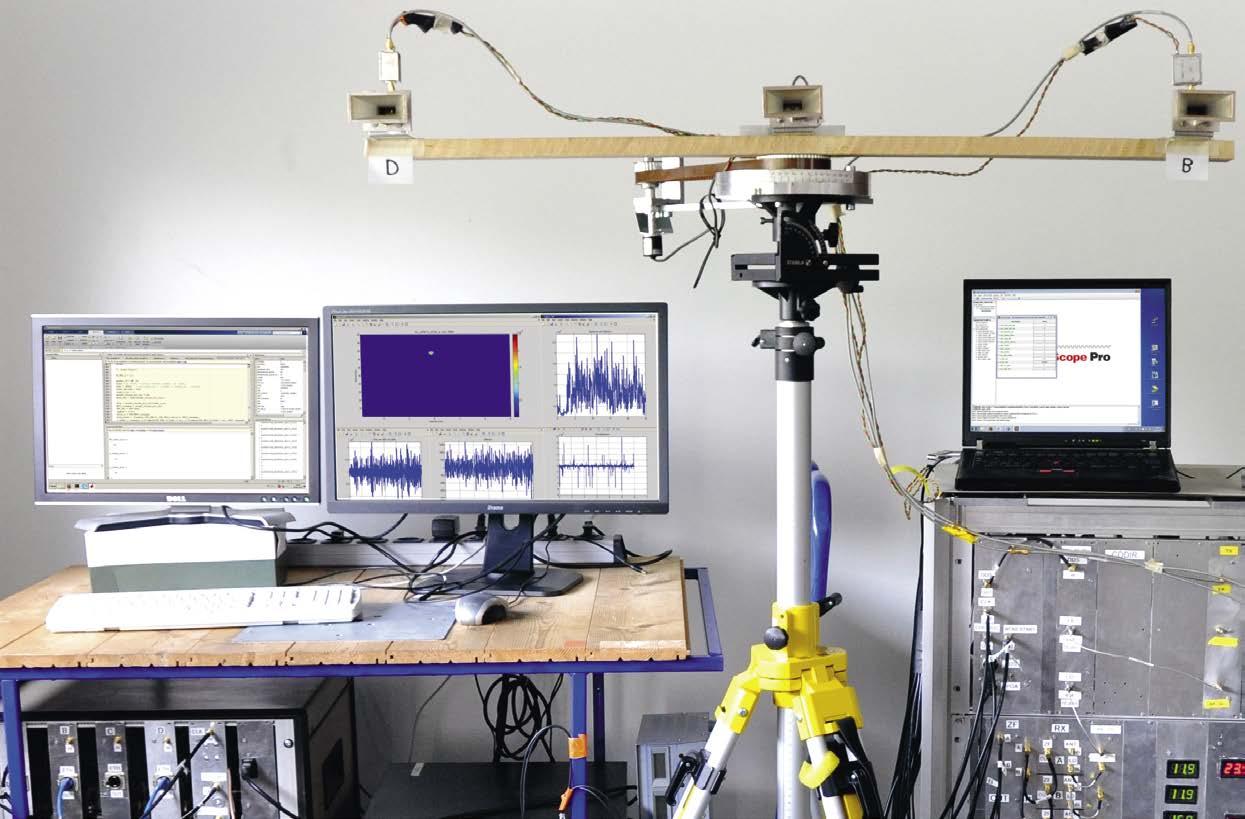
armasuisse’s research activities connect the scientific excellence of universities with the skills of industry and the specialist knowledge of the national government when it comes to security. In addition, armasuisse has unique infrastructure and measuring equipment. Statements made about technologies can be objectively verified. These distinguishing features provide armasuisse research with in-depth expertise for assessing technology and enable innovation to support the Swiss security forces.
We still have to answer the question as to how research success should be measured. We conduct regular assessment surveys among our partners and the recipients of our expertise to determine the extent to which armasuisse’s research goal –building knowledge for security forces – is being achieved . In this respect, most of the feedback we have received in recent years has been very good.

From this, we can infer that we have focused on the right topics in the past. Of course, we identify failings too, and these
we attempt to resolve quickly and successfully. Very often, we enlist the help of our continuously growing national and international network. However, corresponding structures also have to be established within the federal administration. The Swiss Drone and Robotics Centre (SDRC) and the Cyber-Defence Campus have therefore both been created in the last few years. These bodies owe their existence to the knowledge that has been built up by the research at armasuisse. They enable innovation for the Swiss security forces, not least because they know how to apply agile innovation methods. And agile does not mean aimless. The expression refers to the process, not the objective.
Thanks to simulations, we have also succeeded in better assessing the impact of technologies in the security environment. We are helped here by extremely powerful computers, which run through all the possibilities that a new technology can or should perform in a particular scenario. This type of simulation leads to enormous quantities of data. Artificial intelligence helps in analysing the deluge of data to gain information on
Research demonstrators connect up various technologies. The photo shows an experimental radar device which performs considerably better thanks to artificial intelligence.
the application of technologies. This procedure is known as data farming. It enables us to predict what a technology is capable of achieving in the field, without it being directly available. This allows us to complete the circle between research into technology and its impact when deployed, which is important for defining future research topics. However, it can also be used much more widely. Thanks to data farming, we are supporting deployment of members of the Armed Forces in coping with the Covid-19 pandemic.
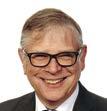
Ultimately, you can recognise the success of research by whether the quality and focus stand up to international comparison. The large number of scientific publications at conferences and professional meetings provide an indication of this. Studies by international organisations on the impact of technological developments on armed forces also show that armasuisse has identified the most important trends. An important foundation has been laid for selecting research subjects, but specific Swiss factors also need to be taken into consideration. armasuisse is a highly valued cooperation partner on the international stage. Cooperation is usually designed for the long-term – a sign that our research partners value collaborative work. Measured in terms of the number of new research projects, we note that the interest of other nations in a research cooperation with armasuisse has increased in the last few years. This speaks for the quality of the work performed by armasuisse’s employees.
Even if our research does not cover all topics in the same depth as that of other nations, it results in valuable knowledge which could only be produced here.
So a question on a Sunday walk with my daughter provided unexpected food for thought about research at armasuisse. It is precisely the seemingly simple questions which often turn out to be very substantial upon closer examination. These are the questions we have to ask ourselves on a regular basis if we want to survive in a world which has become volatile, complex and ambiguous.
Model design and simulation are important instruments for assessing the benefits of technologies for security forces.


Today’s technical aids still have problems locating people like snipers in built-up areas. Modern helicopters also lack early warning systems to alert pilots in dangerous situations of shots that have been fired. In cooperation with research partners, we at armasuisse Science and Technology are putting forward new methods for alerting and locating, and showing how our troops can be warned of snipers in future. We also test technology demonstrators with the use of innovative experiments.
Text: Dr Peter WelligDo you remember the tragic event in Las Vegas in October 2017 when an unknown man fired into a crowd of people? There was complete panic and total chaos everywhere. 58 people were fatally wounded and a further 869 sustained slight to serious injuries. The gunman was holed up in a hotel room and shot into the crowd of people from his balcony. However, for the first few minutes nobody knew where the gunfire was coming from, let alone how many shooters were involved.

It is also not always easy for soldiers in the Swiss Armed Forces to gain a quick overview of the current situation in an unknown area. They too would have problems locating a potential sniper, particularly in an urban environment. Aids such as microphone systems which record the shot or the acoustic event and locate the shooter do exist, but these only perform satisfactorily in areas where there are no buildings. This is due to the fact that in built-up areas sound waves bounce off
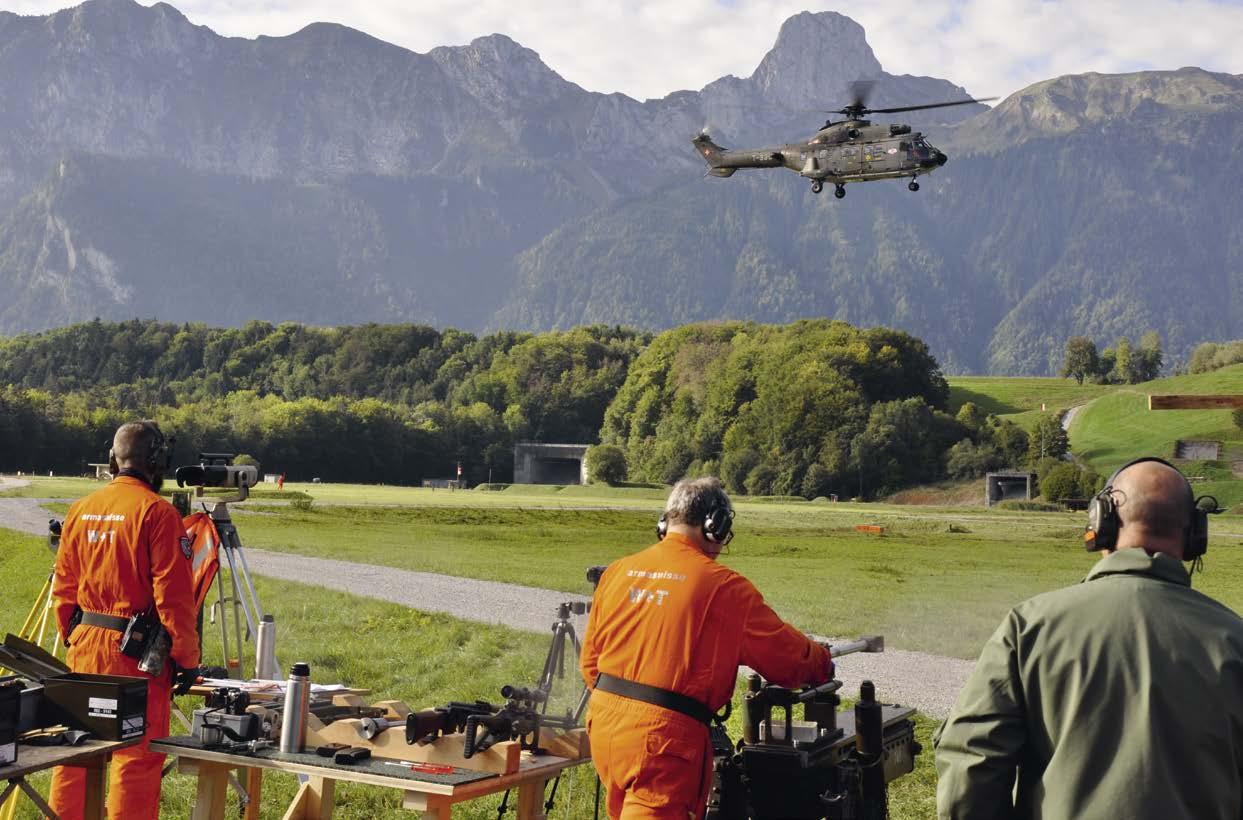
At the shooting trials on open ground in Thun, the specialists from the armasuisse S+T Test Center mounted the weapons on a gun carriage. The helicopter flew over volleys of gunfire and hovered near the ground at a steady height.
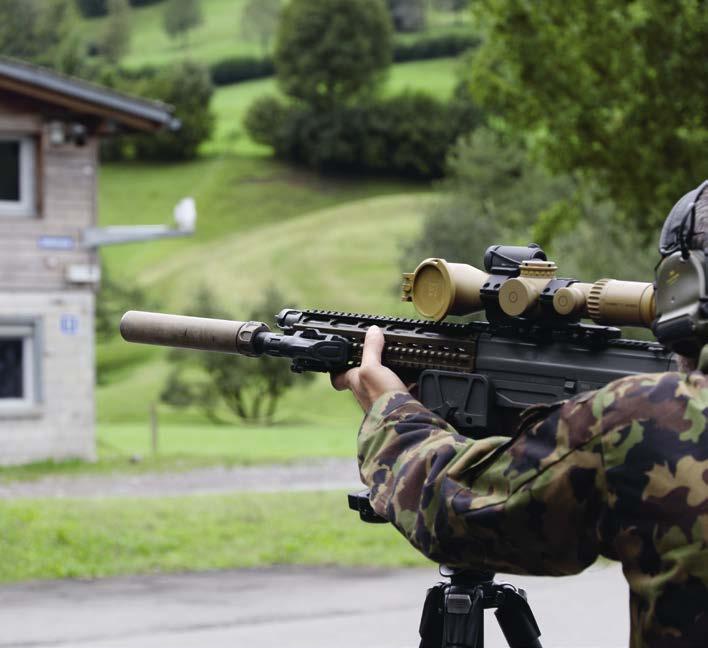
When a gunshot is fired, microphones usually measure a double blast, a punctual explosion - the muzzle blast, as well as a shockwave. The shockwave is caused by the supersonic projectile and propagate rapidly. However, the muzzle blast, on the other hand, spreads out at the speed of sound on a spherical surface. Acoustic sensing systems usually detect and process both signals, assuming that they can be distinguished and classified.
be clearly detected in such situations. The new method for localising a shooter is now to simulate the reflections and the complex way the sound wave spreads on a computer and compare it with the microphone measurements. This is precisely what our experts have been testing in the army training village at Walenstadt military base. Swiss Armed Forces snipers shot from streets and houses at a target slope on the edge of the training village. Microphones were spread around the training village and recorded the acoustic events. It was indeed possible, based on the computer simulations and acoustical events to identify the positions of the snipers in some cases to within one meter. The shot axis was correctly estimated in most cases with an uncertainty of less than 10°. The accuracy degraded when the shooter was outside the sensor network. However, the computer simulations required considerable processing power and the results were not known immediately. This is why we are now examining how a microphone system can directly determine a result in real time.
walls, making precise location impossible. Other technical aids for localisation are radar systems, visual cameras and thermal imaging cameras. However, these systems are also unsuitable in urban environments, as such areas are often complex and exact location is not possible.
Locating people with an advanced microphone system

We at armasuisse S+T are considering further developing microphone systems in order to locate snipers in urban areas. Existing systems in use today, consisting of microphones and electronics, can detect an acoustic event precisely. Unlike radar devices and cameras, microphones do not need to be specifically aligned, as they can perceive the sound of a report equally well from all directions. A microphone does not even need a direct view of the shooter, as a shot can even be heard if it is fired behind a house. To determine the exact direction of a shot and locate the shooter, several microphones always measure the report. As sound spreads out in waves, it first hits the nearest microphone, then the next nearest and so on. The time differences in measuring report enable the sound wave to be traced and the direction of the shot and the position of the shooter identified.
In an urban environment however, it is not just a single wave front from the acoustic event that hits the microphones, but hundreds or even thoudands of waves. This is due to sound waves bouncing off buildings. Thus, the muzzle blast cannot
Based on the computer simulations and acoustic events measured, it was possible to identify the positions of the snipers quite accurately.Members of the Armed Forces shot from streets and houses in the army village in Walenstadt. They used various rifles and even silencers. SENSORS | DETECTING AND LOCALISING GUNFIRE MUZZLE BLAST AND SHOCKWAVE
The loud noise from the helicopter drowns out the acoustic event. For this reason, very sensitive microphones are required.
Improved location and warning systems would also be extremely helpful in other cases, such as when flying a helicopter. Usually, the pilot does not hear if a shot flies in the direction of the helicopter or right past it. It would of course be important for the pilot to know where the gunfire is coming from, in order to fly in a safer direction. The challenge for a microphone-based solution in recognising gunfire, however, lies in the loud noise made by the helicopter, which drowns out an acoustic event. For this reason, very sensitive microphones are required. So sensitive that they function perfectly despite major noise and the strong vibrations of the helicopter and are able to detect a shot. Research company IAV Engineering from Tannay in the canton of Vaud, which specialises in these high-tech microphone systems, has built a technology demonstrator for the Cougar Swiss Army helicopter. The technology demonstrator consists of a box with microphones and electronics and is attached to
the underside of the helicopter. The size of the box is 45 cm x 45 cm x 4.5 cm.

In cooperation with other partners, we tested this technology demonstrator at armasuisse on open ground on the Thun military base. For example, experts from the armasuisse Test Center installed guns on a gun carriage, a mounting for weapons, on the ground. They were then able to shoot very accurately and safely past the helicopter. The engineers on the ground and in the helicopter from the Flight Testing unit at armasuisse coordinated the timing using radio devices. This enabled the chief test pilot from armasuisse to fly over volleys of gunfire on the defined flight paths at the right time. The microphone data recorded in the helicopter showed that gunfire could be clearly detected in various different flight manoeuvres. However, even in future the ability to detect shots and raise the alarm at very high air speeds will probably be limited.
Mr Engeler, you were involved as the helicopter pilot in the flight tests over the open ground at Thun. Shots were fired close to the helicopter. What was important for you when preparing and performing these out-of-the-ordinary tests?
The flight tests have to be carried out safely and the risks identified and mitigated in advance, for instance by ballistic protection on the helicopter, the crew wearing protective vests and keeping to minimum heights and distances. Arranging, coordinating and professionally carrying out the tests with the specialists from armasuisse S+T was crucial.
Did you hear the shots during the flight manoeuvres? And if you did, were you able to tell the direction the shots were coming from just by listening?
The shots from the 12.7mm sniper rifle could be heard from close by, but due to the considerable noise level of the helicopter the source could not be localised. This experience underscores the need for a reliable hostile fire indicator.
What criteria should a warning system for rifle shots meet to support you as a pilot? And how do you rate the results of the technology demonstrator used in Thun?
For a warning system to be reliable, it must be able to give alerts in real time and at distances which still allow for evasive manoeuvres. For this, the crew's human-machine interface has to allow immediate situational awareness, for example, using clear display devices and 3D audio. It must also have a high probability of detection and at the same time a low rate of false alarms.
The system tested on the flight did not yet have a real-time display, but the results of the post-flight evaluation are promising.
Using new and improved microphone systems and computer simulations, together with out-of-the-ordinary experiments, armasuisse and its research partners were able to successfully demonstrate how our troops can be warned against fire in future. The knowledge gained will also help us to test systems procured in the future.
Dr. Peter Wellig has headed the research programme "Reconnaissance and Surveillance" at armasuisse Science and Technology since 2008. The focus of "Reconnaissance and Surveillance" is on new ways of acquiring information, for example for airspace surveillance or for weather-independent imagery reconnaissance. The programme is also exploring new ways to detect and locate threats, such as from drones and snipers. Technological developments in detectors, artificial intelligence and data communication will make it possible to detect and track targets better than can be done today, even under difficult conditions such as cloud, rain and with few people. However, the performance limits of these technological developments need to be assessed and possible countermeasures examined.

Exterior view of the technology demonstrator. It can be deployed in all flight and weather conditions.
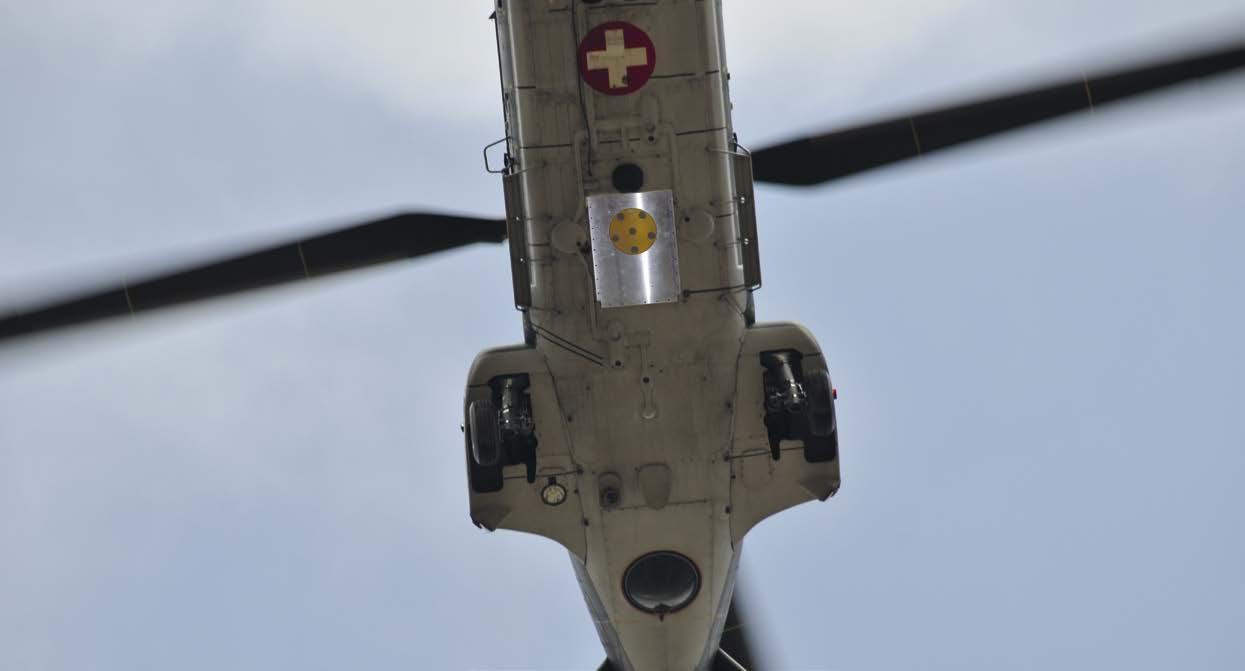

Interior view of the technology demonstrator. The integrated microphones capture the bullet report and identify the direction of origin of the sound.
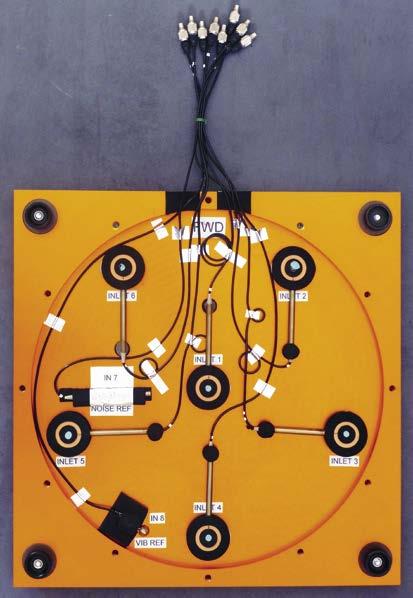


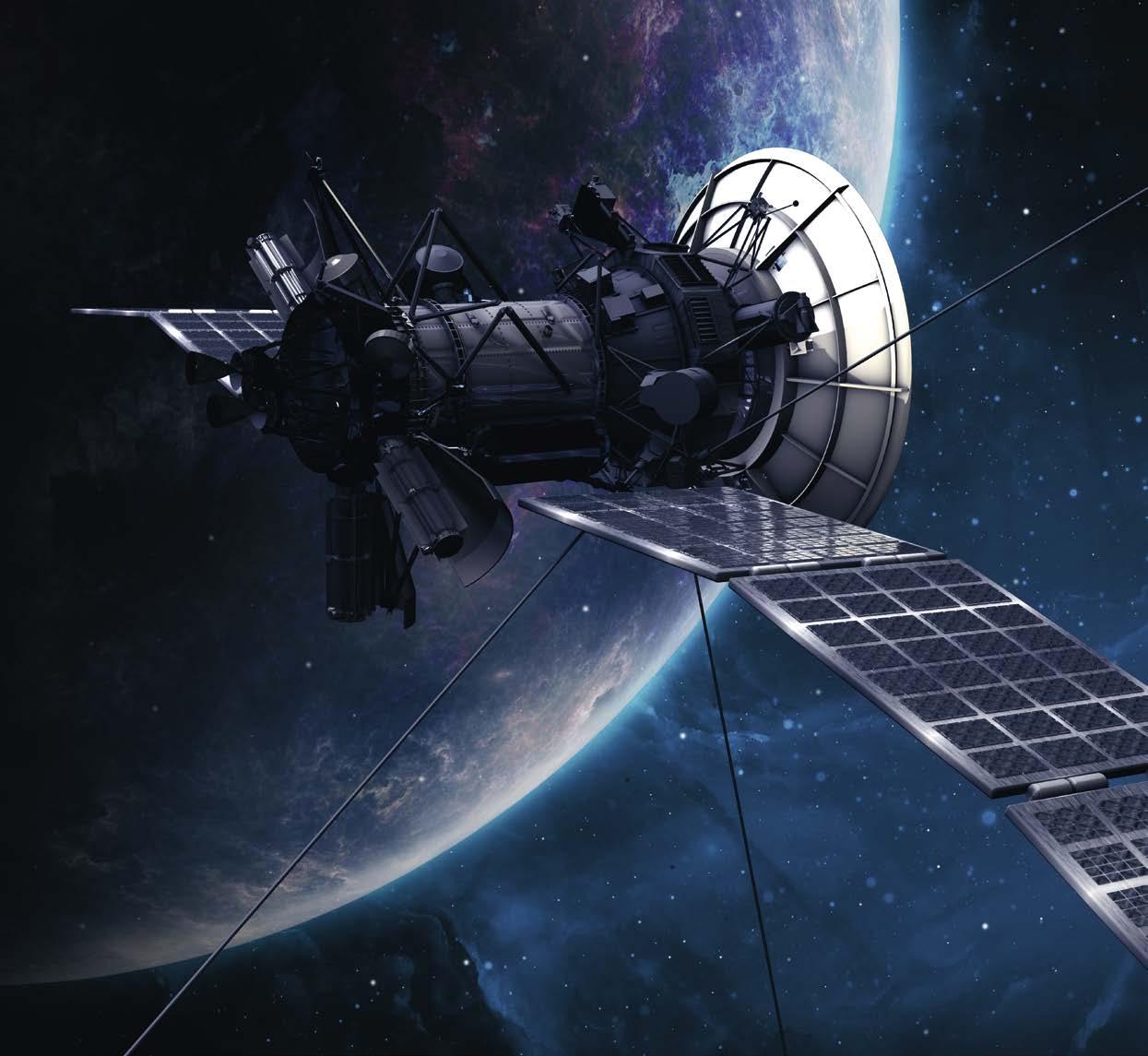
Both private individuals and companies benefit from fast satellite communication these days. In doing so, they accept that their data is sent unencrypted and so can be intercepted. Researchers at the armasuisse Cyber-Defence Campus have found a solution to how data can be transferred quickly by satellite but still be protected.
Text: Dr Vincent LendersSatellite communication is becoming increasingly significant both in civilian and military domains.

The CYD Campus was founded in January 2019 under the lead of armasuisse Science and Technology. It is an element of the “Action Plan Cyber-Defence DDPS” and aims to improve the protection from cyber attacks and respond appropriately to future cyber challenges. For this purpose, it supplies the DDPS with rapid developments, applied research, training and technology monitoring in the area of cyber defence. The primary goal of the CYD Campus is to anticipate cyber developments. As a cyber competence centre, it acts as a platform for identifying and assessing technologies, commercial and social cyber trends and the resultant deployment scenarios. It forms a link between the DDPS, industry and science in all cyber-relevant topics.
in, as satellite signals can be received without any problems over large areas and intercepted using simple equipment. How can this be?
Fast data transfer but no data protection

Satellite communication is very practical and extremely convenient for users. This is due to the fact that it works from anywhere on earth, as long as there are no obstacles between an antenna on the ground and the corresponding satellite in space. Large Swiss corporations and operators of critical infrastructure use the technology to communicate with their branch offices or connect to ships and aircraft. However, apart from these advantages, communication by satellite also has a significant disadvantage: the very great distances to the satellites, around 36,000 km, lead to perceptible time delays in data transmission. This is not a problem for applications such as television or geolocation. But when surfing the web, these lags lead to very long download times for websites. This is why satellite operators today prefer to use what are known
Hardly anyone uses WLAN without encryption today, because without protection, neighbours or an unknown stranger could intercept the data traffic. However, what has long been normal for WLAN appears to still be given little attention in satellite communication, as Dr Vincent Lenders, Head of the Cyber-Defence Campus at armasuisse discovered. Large international corporations and even operators of critical infrastructures still send data that should be protected completely unencrypted by satellite. In an extreme case, not only neighbours, but millions of curious people, can listen
The very great distances to the satellites lead to perceptible time lags in data transmission.
as performance enhancing proxies to increase surfing speed. These act as an intermediary between transmitter and receiver and can compensate for the long delays by specifically adapting the communication protocol.
But therein lies the crux. If companies encrypt their data with a virtual private virtual network (VPN), for example, these proxies cannot accelerate the data traffic because they do not have the key. That is why there is the risk that many users, and even large companies, dispense with common encryption methods in the hope that no unauthorised strangers intercept the traffic.
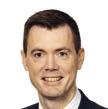
This is exactly what the researchers at the Cyber Defence Campus of armasuisse have realised. They point out that the data traffic of many companies is not encrypted, including their sensitive data. Even worse, it can be easily intercepted by a software-defined radio. It must therefore be assumed, says Dr Martin Strohmeier, an expert from the Cyber Defence Campus, that companies today are systematically spied on via satellite communication. And he adds: “Many companies are not aware of the problem, because they think that the satellite operator uses encryption.” But in most cases, this is not so.

Today, companies still have to decide between speed and security. But this could change in future. Since 2019, employees at the Cyber Defence
Campus have been working with national and international universities on new solutions. In spring this year, the researchers were already able to present an initial prototype of a new proxy in Thun capable of encrypting data traffic without loss of speed. So users of satellite communication should be able to enjoy fast and secure communication in future, just as with WLAN today. This is particularly beneficial to private individuals and bodies, including the Armed Forces, who work with sensitive data that needs to be protected. However, various adjustments and clarifications are still required before it is fit for global use. The first deployment of this new proxy is planned for 2021 at armasuisse in Thun.
One form of satellite communication is shipto-shore technology, also known as VSAT, which is shown in this graphic. An attacker can easily intercept VSAT communication if it is not protected by encryption.

Many companies are not aware of the problem, because they think that the satellite operator uses encryptionDR VINCENT LENDERS Head of specialist area and Director of the CYD Campus
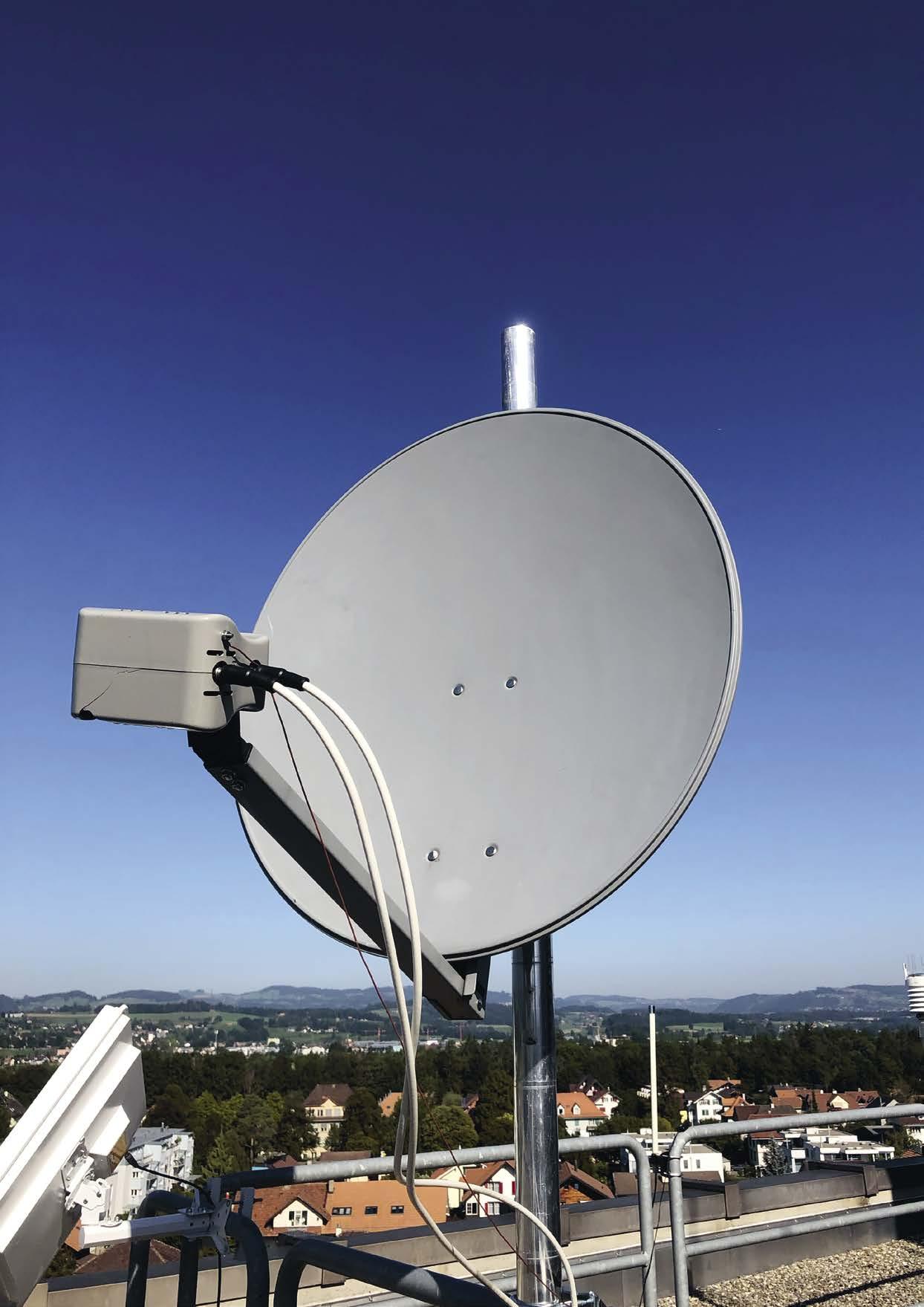


How do you find the cooperation with armasuisse Science and Technology (S+T)?
Excellent! The basketball player Michael Jordan once said: “Talent wins games, but teamwork and intelligence win championships.” So in the long run, we rely on teamwork and intelligence. In the context of the Armed Forces, we take “championships” to mean conducting successful deployments. And that’s exactly what we owe to the Swiss population and the members of the Armed Forces. I appreciate the open and helpful attitude of the employees in this field.
What skills particularly characterise armasuisse S+T and make them unique? armasuisse S+T is a key partner to the Armed Forces Staff in identifying and monitoring technology. It provides important information and decision-making bases for the Armed Forces in various areas, especially in connection with technological development. This is a key skill for developing the Armed Forces and hence for the longer-term orientation of the army. In particular, technology management is of great value for me as Head of the Armed Forces Staff. I also greatly appreciate the information transfer events which take place regularly, such as the DEFTECH Days, ARCHE, etc.
Can you name successful achievements in your work which you owe to armasuisse S+T?
The Cyber-Defence Campus is definitely one of the successful projects in the recent past. Digitalisation is also a priority issue in security policy. armasuisse S+T is actively supporting us on the path to greater agility and increasing digitalisation. This maximises our potential and helps us to increase our performance. I also remember very positively the contributions in operations research when developing CREDO to support decision-making in complex situations. The use of this tool has proven its worth in planning and implementing the WEA development programme of the Armed Forces.
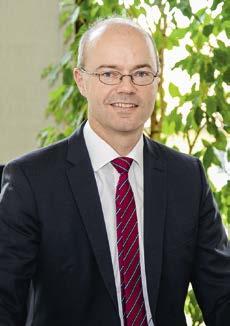 Knechtenhofer,
Knechtenhofer,
Where do you see the strengths of armasuisse Science and Technology (S+T)? armasuisse S+T has unique knowledge and expertise, which cannot be procured anywhere else in Switzerland, such as knowledge about radar, cyber and robotics. The DDPS has a direct influence on the research areas of armasuisse S+T and can therefore determine clear and substantial priorities. A further very important point is armasuisse S+T’s independence from suppliers, as well as from the consumer.
How do you find the cooperation with armasuisse S+T?
I find the cooperation with armasuisse S+T professional in every respect. The specialists from Thun support us in procurement with their expertise in numerous projects. armasuisse S+T plays the role of an expert, while we from the Command and Control and Reconnaissance Systems competence sector take on the role of procurement. As a result, we are not always of the same opinion. Different perspectives need to be resolved by discussion. Overall, thanks to this cooperation we jointly achieve significantly better results in projects than if we were to try to buy in the expertise we need.
Can you name a successful achievement in your daily work which you have experienced thanks to your cooperation with armasuisse S+T?
In the basic documents of the Defence group, for example on cyber, which are discussed as part of the planning report of the group, it is clear that armasuisse S+T provides sound and important advice. We benefit from this as armasuisse, as does the entire DDPS.
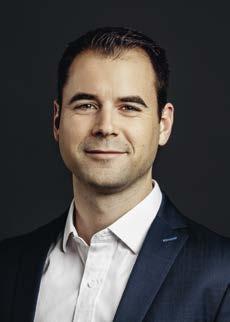
What skills particularly characterise armasuisse S+T and make them unique? armasuisse S+T has a good insight into needs in Switzerland and abroad regarding the military use of robotics technology as well as a well-established network of research and development specialists. Apart from research, armasuisse S+T also offers experimental and test sites for new technologies, together with the Armed Forces. The results of this can be seen with ARCHE, an event which was launched by armasuisse S+T and today represents an important tool for screening and evaluating technology.
Where do you see the strengths of armasuisse
As a direct result of the development of the Swiss Drone and Robotics Centre (SDRC), we were able to launch a flagship project supporting Swiss research at grass roots level, with a view to extending its world-leading expertise from research to application in future. Projects with armasuisse S+T have so far been executed without excessive bureaucracy, which has only been a benefit for all those involved.
What hopes do you have for armasuisse S+T? armasuisse S+T can play a very important role in influencing the developments of Swiss technologies on a sustainable basis and strengthening the industrial location, so the entire DDPS can benefit in the long-term. I hope armasuisse S+T will be able to act with even more agility and flexibility. Technology is power. It is therefore important that armasuisse S+T takes on an even more important role within armasuisse in future. A very good example is the former ammunition depot in Mitholz: as we already know the contamination will have to be removed, and it is important that armasuisse S+T works intensively with partners today to build up the required technology. There is no doubt that the expertise this requires is available in Switzerland.
What have you been able to gain personally as well as for your area thanks to the cooperation with armasuisse S+T?
The cooperation with armasuisse S+T has helped us examine the correct, important issues and research questions. The research projects with armasuisse S+T enable us to further develop pure basic academic research, which is well supported in Switzerland, from the laboratory to technological demonstrations in the field. We have also been also able to benefit from the armasuisse infrastructure and perform important tests in relevant environments. And last but not least, dialogue with specialists and troops of the Armed Forces has helped identify problems in existing research and develop new ideas.

Where do you see the strengths of armasuisse Science and Technology (S+T)?
From my point of view, one of the great strengths of armasuisse S+T is its networking. The reputation of the armasuisse S+T specialists in their areas is very impressive – even at an international level. Of course, this requires a corresponding openness on the part of both the organisation and the employees.
How do you find the cooperation with armasuisse S+T?
I find the cooperation very agreeable, consistently professional and focused.
Tell us about a successful experience which resulted from the joint cooperation. We see ourselves as supporting the armasuisse's fields of expertise. For us, success means we offer them a platform in our area of responsibility and they are able to defend the interests in question. This is particularly easy with armasuisse S+T: The topics are interesting and the priorities are clear.
What hopes do you have for armasuisse S+T?
Perhaps it would be desirable for armasuisse S+T to enjoy even greater visibility beyond specialist circles: the skills at S+T are an enormous asset for the DDPS and the federal government in general.
It’s 25 April 2050 and the sun is shining on an extensively networked Switzerland. All means of transport in a country that is self-sufficient in terms of energy are powered by electricity and optimised by constantly measuring the activities and movements of all inhabitants. Artificial intelligence coordinates the processes and ensures the flow of traffic and the security of the population. However, the calm is deceptive and the Armed Forces are on high alert: all the country's solar panels have been put out of operation.
Text: Dr Quentin Ladetto2050 seems to us to be the year where everything is possible and all science fiction technologies have become reality. Much has changed and been developed, but not at the same pace or to the same extent everywhere. Will digitalisation and the merging of various areas of technology and science bring about changes as quickly as hoped or feared?
The Deftech programme relies on three activities to explore the future and describe its challenges.
1. What are the new skills of the soldiers of the future? – New words to describe the future.

sation
In a stable world, you can rely on predictions to indicate future developments, anticipate coming changes and design a strategy fit for the purpose. In times of upheaval, as we are currently experiencing, the scope of legitimate prediction is considerably smaller. Multiple future possibilities need to be reconsidered. And there are just as many new perspectives on the unprecedented challenges and opportunities ahead which are already burgeoning today but may not yet have been thought about.
To place itself in the future, armasuisse Science and Technology (S+T) has an early identification programme known by the name Deftech – Defence Future Technologies. This programme can be used to recognise areas of disruptive technology, as well as to anticipate their impact on armed forces in general and the Swiss Armed Forces in particular.
2. In what kind of technological environment will soldiers operate? – An interactive narrative, to plunge into a possible future.
3. What tactical advantages do these new technologies have? – A war game, to simulate the deployment of these technologies.
What new skills does the soldier of the future have? Every living language sees words created and disappear. Both are inevitable, as language addresses current human needs. You often don’t known whether the new words have been created by chance or whether someone invented them. When a word is invented, the ideas behind it and the object described start to exist. Creating a word means inventing the future. Together with Anne-Caroline Paucot, who writes about the future, we at armasuisse S+T are writing the “Dictionary of the Soldier of the Futu re”, an online dictionary to instigate shared reflections on the soldier of the future. The new terms
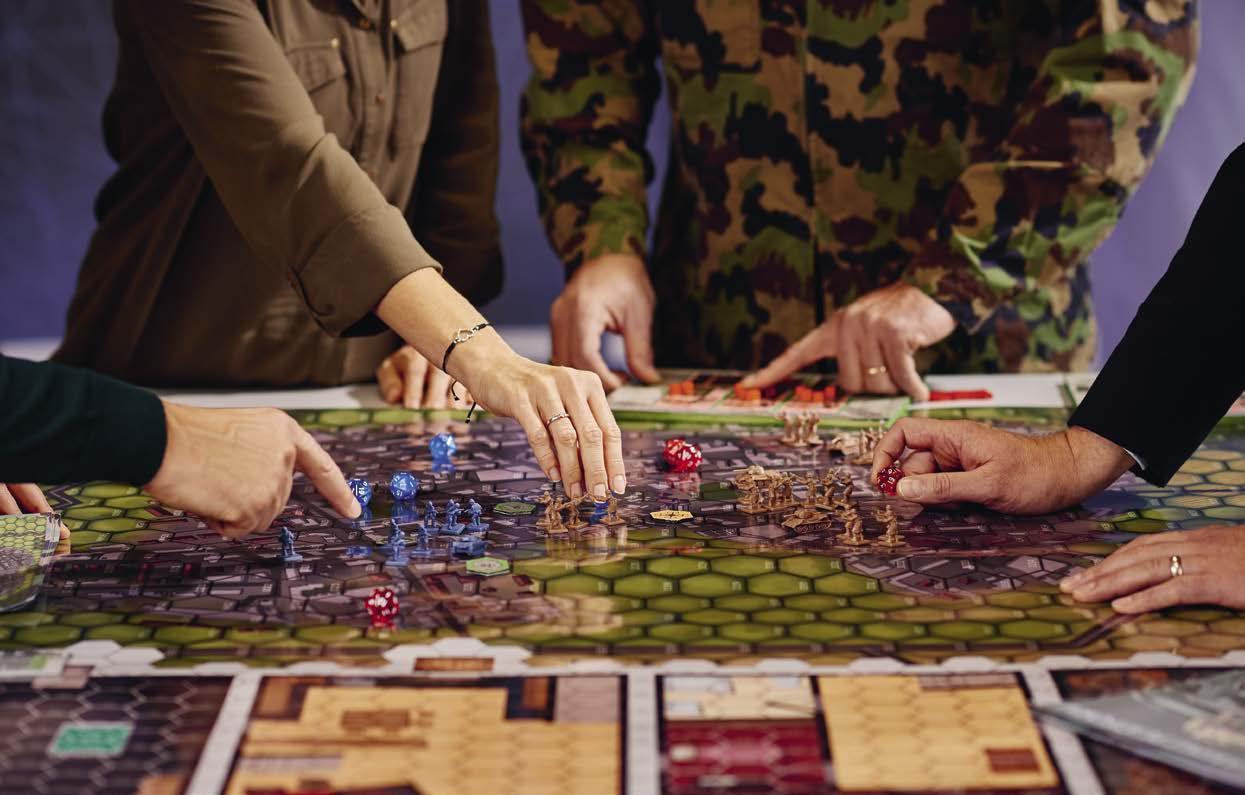
Will digitali-
and the merging of various areas of technology and science bring about changes as quickly as hoped or feared?
A therapist who specialises in the harm caused by misuse of digital media. In the Armed Forces, digitalisation is changing daily actions, thinking and life. This has given rise to various disorders. The data practitioner observes, analyses and corrects the negative impact.
The most frequent disorders are: zombyism, the syndrome which occurs when people physically present are mentally absent; binarism or binary cognitive behaviour; robophobia, the fear of robots; AI addiction, dependence on artificial intelligence.
focus on military careers which might emerge, new technologies and the future systems based on these. Soldiers are considered in their entirety. Consequently, the considerations cover a range which goes far beyond our standard image of a modern soldier.
The dictionary of the soldier of the future
Each new word has an identity card with an illustrated passport photo. This contains the information listed below.
Apart from a description explaining the new word, a “perspective of the soldierologist” outlines why the concept described is of interest to the Armed Forces. The challenges focus on the technological issues that need to be resolved so the innovation can be brought to market. The indicators show the current state of development.
Of course, questions formulated taking into account a range of considerations – from a sociological, ethical or organisational point of view, for example – remain open. The dictionary’s section “Today is tomorrow” presents existing developments and the current state of the art in the military sector. This is intended to draw attention to the fact that some elements of this future are already in use today.
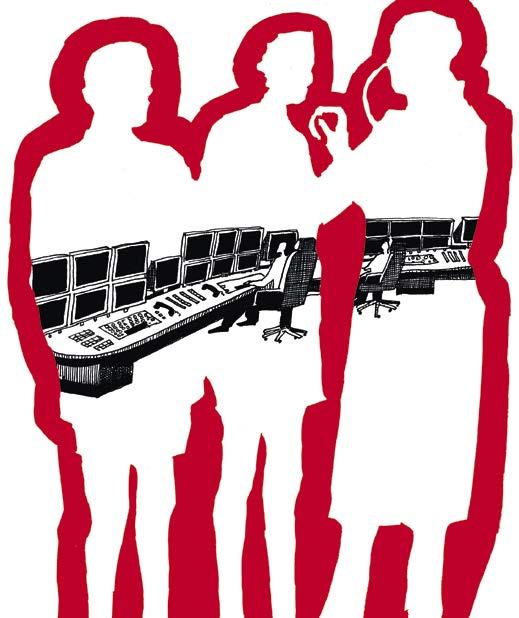
Finally, “News from the future” reports from a different time, when the element described or word invented has become an integral component of the life of a soldier, and describes a potential application.
The dictionary already exists in printed form, and also enables cooperation with the French Agency for Innovation in Defence (AID), which was involved in the process of creating the words and organising a digital workshop.
In what environment will the soldier of the future operate?

Most people imagine that technology will play a dominant role in the year 2050. Unless something unexpected turns
the trend upside down, it is more than likely that by then significant advances will have been made in many areas. As part of the future of soldiers we considered the various fields of research: robotics, artificial intelligence, mobility and the supply chain, to name just a few examples. This work was carried out by the company Envisioning as part of the Soldier of the Future project, using various different theme radars to represent the information.
This made it possible to demonstrate the importance, acceptance and maturity of various technologies. Covering topics such as robotics, supply chains, films, and computer games, these research activities form the basis of various cooperation opportunities with institutions such as the International Institute for the Management of Logistics and Supply Chain (IML) at ETH Lausanne. A variety of technological future opportunities have been analysed and discussed with these experts. These discussions have been crucial to the strategic development of the Armed Forces' skills, where logistics, amongst other things, play an important role.
However, none of the innovative elements on one of these strands of research is explicitly connected with its neighbours. It is therefore difficult to imagine a possible future in which several of these innovations occur simultaneously. How can this challenge be met?
The solution we have developed is called “narrative future”. Fragments of a future scenario are combined into science fiction narratives which contain technologies with a similar degree of maturity. These narratives enable the reader to experience the various options that might result from the use of certain technologies.
How the story, in which you play the main character, unfolds depends on whether you are a technophile, with a positive attitude towards technology, or a technophobe. But the goal remains the same: that you have a new chance to think about the opportunities and dangers of certain innovations. The first four stories focus on the interaction between human and machine. Three technological horizons define the future opportunities in which the figures are located:
1. People only use the technologies: tools and technology make people’s lives easier. This is the start of a constant interaction in new environments, as is already the case, for example, in smart homes and self-driving cars.
2. People merge with technology: by using surgery, technology can be integrated into the human body. This electronic-organic mixture opens up new opportunities for cooperation.
3. Technology gains the upper hand: the tools, the machines have become companions. More and more decisions are made by algorithms and artificial intelligence, which results in numerous ethical problems.
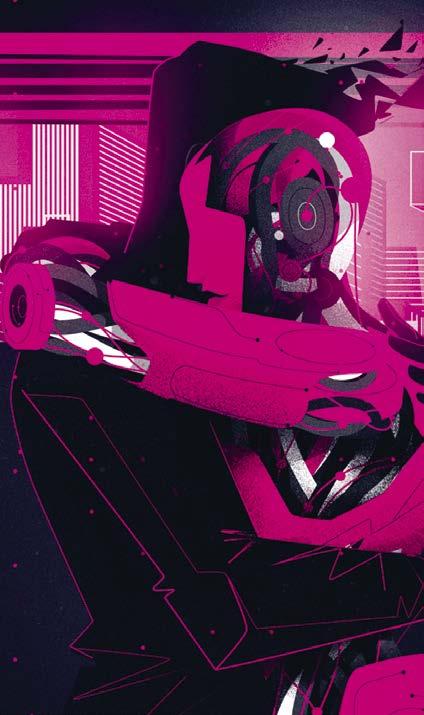
What tactical advantages does a technological soldier possess?

Developments under way in numerous areas suggest technological revolutions and disruptions. But will they actually provide a competitive advantage? Civilian life can count on early adopters, who test certain elements indirectly; the military is normally more critical of the reliability of products used. One basic requirement is that an innovation must provide a tactical or strategic advantage. How can this be assessed, if the products in question do not yet exist? One possibility is to explore the (as yet) intangible reality with a serious game.
armasuisse S+T has set up a game that enables the future to be explored at no risk and – not insignificantly – at low cost. This enables the participants to measure the positive or negative added value of a new technology. As a consequence, the game is not directly about winning, but reaching a better understanding through dis-
cussions about what strengths and weaknesses these future systems will have in certain tactical scenarios. After several trials of format, a board game in the form of a war game was chosen. Various units of the Swiss Armed Forces staff were directly involved in developing scenarios and choosing the technologies used. We also made sure that all defence simulations adhered to the Geneva Convention. Expert confirmation of various technological parameters ensures a fantasy world with realistic values for the next few years – but this is not supposed to stop anyone from dreaming during the game!
After several attempts, these components resulted in “New Techno War” – a game from the company Helvetia Games. And the digital version? To understand how a new technology can be used to optimum effect in military or civilian life, all possible applications must be taken into account. This can only be achieved with a computer simulation. Based on an approach using multiple digital agents playing in the virtual world, we create various versions of the game where it will be possible either to interact with artificial intelligence or combat it. This type of simulation enables us to analyse the various tactical options and to draw conclusions. The developments are currently being implemented and open up new
The version of the serious game “New Techno War” is commercially available as a board game.
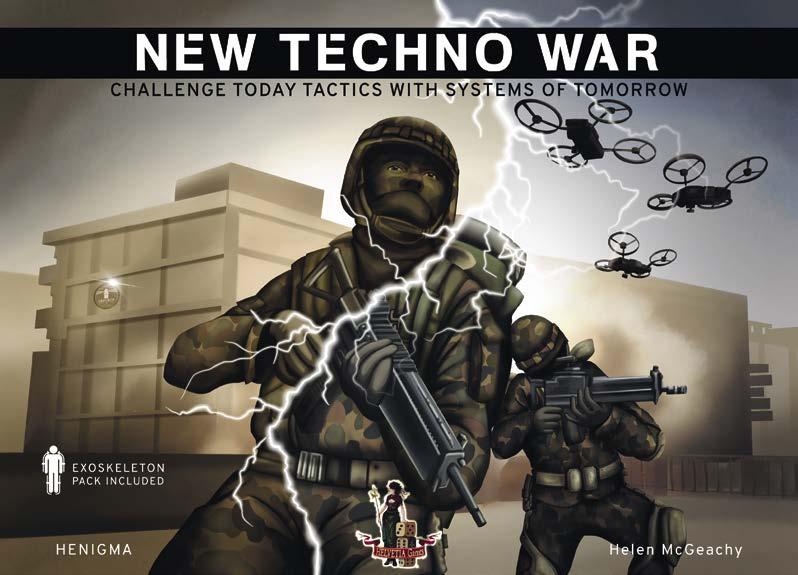
possibilities for understanding and analysing

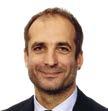
and disadvantages of future systems.

Whether it happens through a word, a narrative or a simulation – early identification comes from being transported into the unknown and preparing yourself for not one, but a multiple of future variants. With parallel work on technological megatrends, we want to anticipate the changes which could affect the Swiss Armed Forces and make them aware of these. Be it opportunity or risk, the use of technologies has multiple faces and will still give us many more surprises. The core topics are information, training and inspiration: we remain vigilant and are preparing the Swiss Armed Forces for the unforeseeable. To 2050 and beyond!
“Never invest in a technology unless you have seen it first in a video game.”
the advantagesDR QUENTIN LADETTO Head of research programme Dr Quentin Ladetto has been working since 2013 at armasuisse S+T, where he is Head of the “Technology Foresight” research programme. The aim of his work is to recognise disruptive developments in technologies. The impacts are assessed in a military context and possible consequences for the Swiss Armed Forces are identified.
Researchers in Research Management and Operations Research at armasuisse Science and Technology (S+T) have developed SimCo-19, a web application based on a simulation of the Swiss population. The application supplies realistic predictions on the Covid-19 situation in Switzerland, supporting decision makers in the battle against Covid-19 and answering further questions.
 Text: Dr Michael Rüegsegger
Text: Dr Michael Rüegsegger
SimCo-19 is based on a synthetic population of Switzerland, also known as a digital twin.
The abbreviation SimCo-19 stands for Simulation Covid-19. It is available in the form of a web application and digitally reproduces the spread of Covid-19 in Switzerland. It has been developed by the Operations Research and System Analysis team (ORSA) at armasuisse S+T, in cooperation with their research partner Scensei GmbH. SimCo-19 is based on what is known as a multi-agent simulation of human behaviour and the spread of Covid-19.
A synthetic population of Switzerland known as a digital twin forms the basis of SimCo-19 for calculating the spread of the virus and the resources needed. The Swiss population is replicated by composition, in other words, in terms of age, gender, place of residence, etc., without referring to specific people. Statistically speaking, no
differences can be identified between the real data and this synthetic data. It is not, however, possible to draw conclusions about real living persons. The advantage of this method lies in the fact that the human behaviour of a large group of people, in this case the entire Swiss population, can be simulated precisely and at low cost.
To emulate the spread of Covid-19 using the web application, the digitally simulated data on the Swiss population is additionally supplemented with data on countermeasures such as social distancing, mobility restrictions, wearing face masks and performing SARS-CoV-2 tests. The resources emergency doctors and paramedics required to help Covid-19 patients are also simulated. This includes personal protective equipment, mobile ventilators and beds in intensive care units.
SimCo-19
of various countermeasures.

The benefit of SimCo-19 lies in comparing the data on a realistic representation of the propagation dynamics of Covid-19 with the data on the resources required to combat the pandemic. Based on the actual values of the spread and the resource requirements, the application generates forecasts for the future and answers important questions, such as: how many more people may become infected with coronavirus and is enough protective equipment available for hospital staff? The application helps crisis teams identify medical bottlenecks early on and assess the effectiveness of various countermeasures at a particular point in time.
By means of data fusion, in other words, by merging various data records, synthetic population data can be continuously enhanced and supplemented, for example with data on pre-existing conditions and Covid-19 symptoms, the number of confirmed cases and the number of deaths. This static snapshot of the Swiss population can now be
The principle of the digital twin of the Swiss population for simulating the spread of Covid-19 and checking counter-measures.
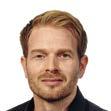
The basis of SimCo-19 is a so-called synthetic population model, also called a digital twin. In it, the Swiss population is mapped according to its composition by age, gender, place of residence, etc., but without referring to specific persons. Based on actual values, SimCo-19 creates forecasts for the future and answers important questions.


helps crisis teams identify bottlenecks early on and assess the effectivenessDR MICHAEL RÜEGSEGGER Deputy Head of Research Management and Operations Research Michael Rüegsegger has been Head of Operations Research and System Analysis (ORSA) at armasuisse Science and Technology since 2019. Together with his team, he supports decision makers in the Swiss Armed Forces in making holistic and robust decisions in a complex and uncertain environment. He does this by simulating possible deployment scenarios in defence and disaster relief to examine the effectiveness of new technologies, systems and tactical approaches.
brought to life in times of Covid-19 by integrating the daily behaviour of persons depicted in the digital twin. People’s relationships within their family, how they behave with other people where they live or work, and mobility can be taken into consideration. In reality, the SARS-CoV-2 virus spreads through social interactions with a measurable probability. SimCo-19 can explicitly model this.
Questions such as the impact possible multiple infections may have on the burden on the healthcare system or optimum distribution of a vaccine can now be analysed using the digital twin of the Swiss population. The open architecture enables real data about mobility and contract tracing to be integrated. SimCo-19 can also simulate various scenarios, such as exits from lockdown, based on the economic costs
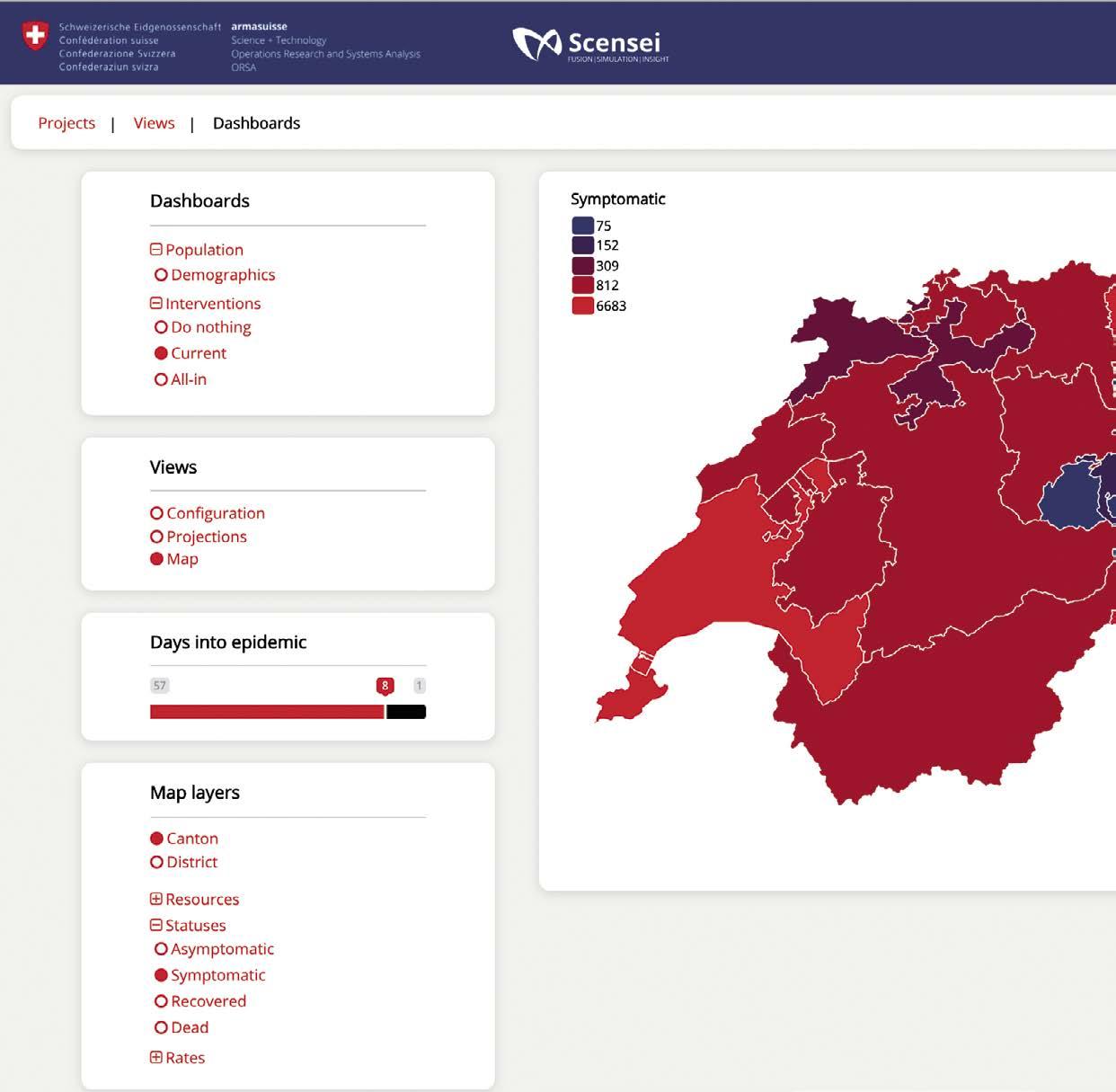

SimCo-19 also makes it possible to predict the need for medical supplies.
incurred and intervention costs required, and compare them with each other.

SimCo-19 not only makes it possible to show how SARS-CoV-2 infections and Covid-19 illnesses in the population develop, it also facilitates reliable predictions of the need for medical supplies and allows various scenarios to be compared with each other.
Screenshot of the SimCo-19 web application. Forecast of the number of symptomatic and asymptomatic people infected, deaths and people who have recovered by district and canton.
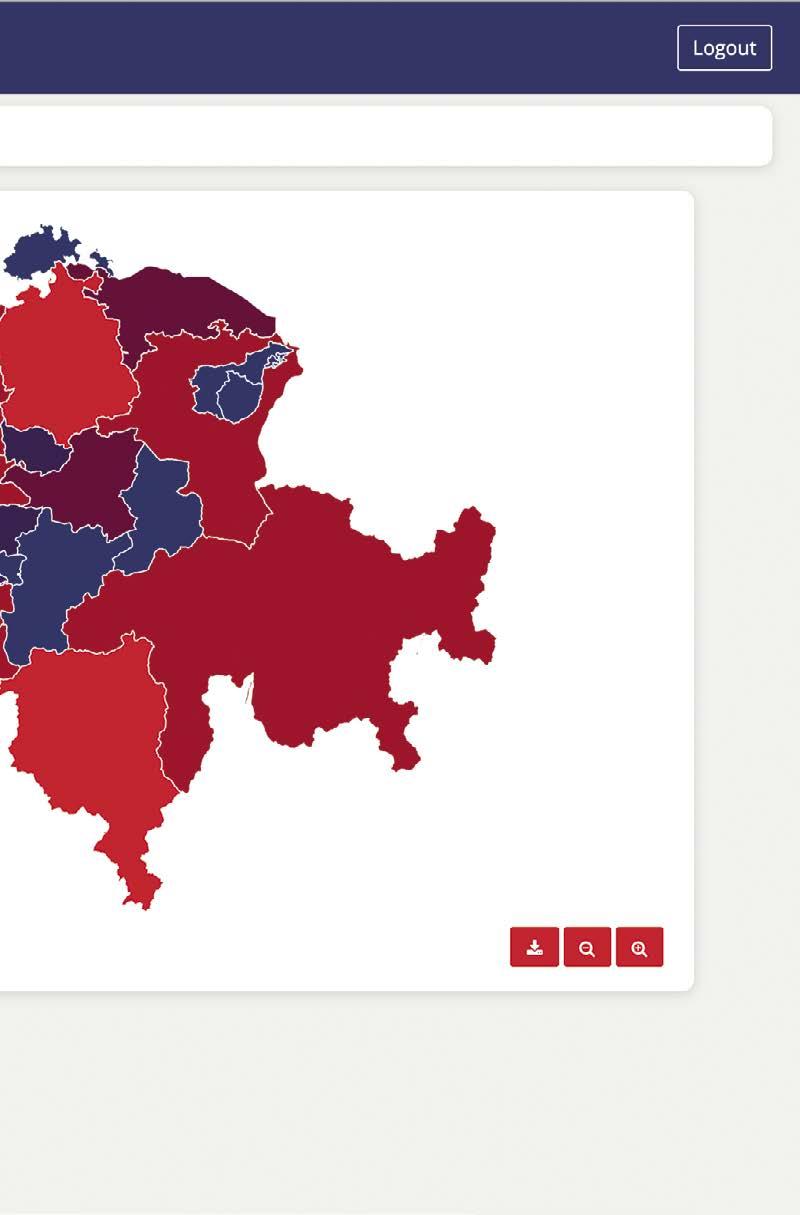
ORSA has made the methods and algorithms of SimCo-19 available to other nations through the NATO Science and Technology Network to support decision makers and emergency staff in other countries at this difficult time.
During the development of the application SimCo-19, care was taken to ensure that the architecture could be transferred to a platform which can support future decision-making better and more quickly. Regardless of whether simulations are used to combat a virus, for disaster relief or in the case of a hybrid conflict, a digital twin of the Swiss population provides many advantages: The web application simulates human behaviour cost-effectively and can predict and test a variety of different measures before they are implemented.
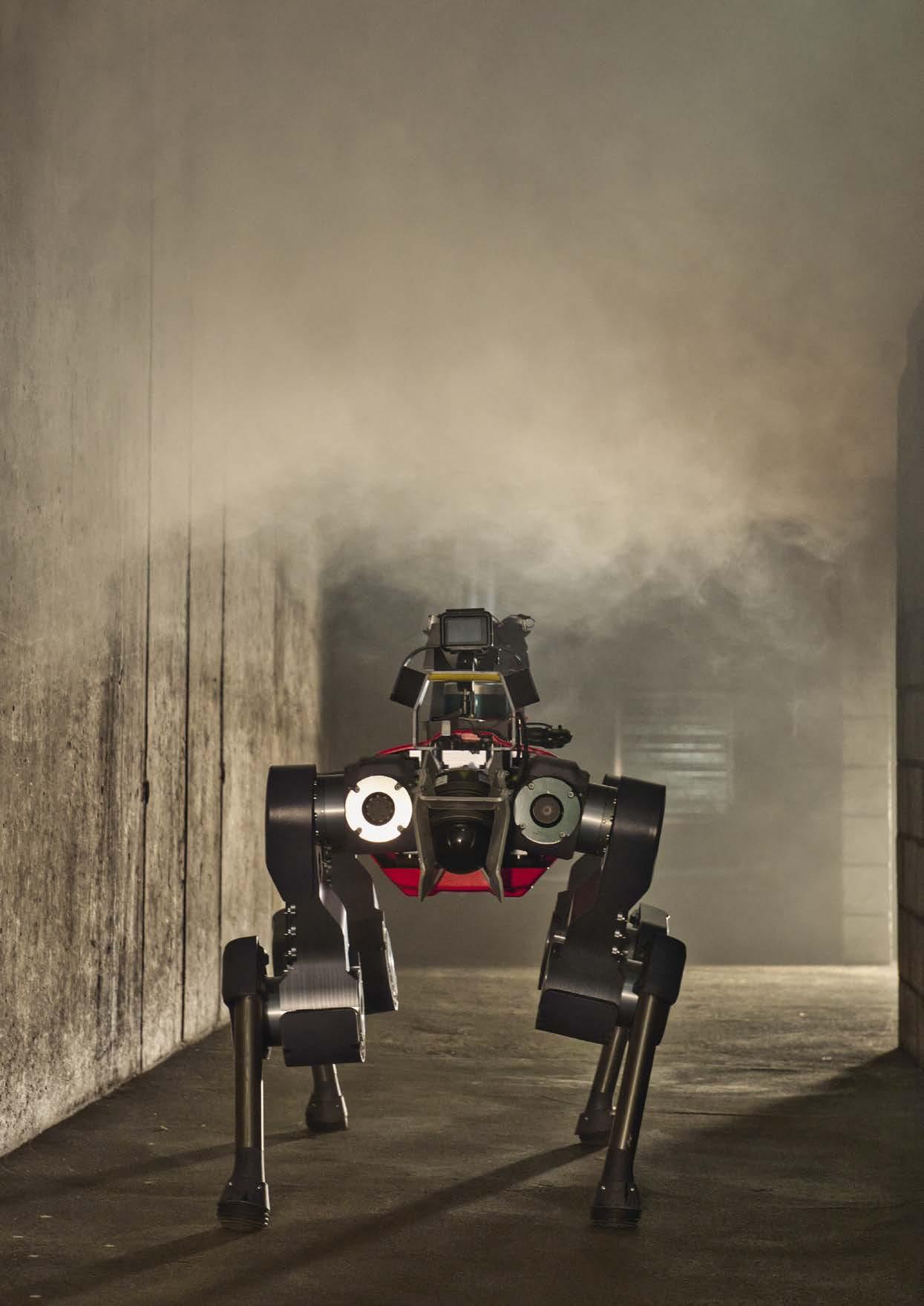
Reports about new robots and drones appear almost every day. Whether remote-controlled or autonomous, they are meant to be used for a whole range of applications – one day.
Text: Dr Markus Höpflinger SWISS ROBOTICS FOR THE DISASTER RELIEF OF THE FUTURE | RESEARCH
SWISS ROBOTICS FOR THE DISASTER RELIEF OF THE FUTURE | RESEARCH
Reports about robots and drones are pouring in on almost every media channel. We read about a future in which autonomous vehicles will deliver hot meals to our tables by air, and self-driving taxis that will take us to hospital. We learn about humanoid robots that check us in to hotels and help us to shop, and about other systems which offer no direct human benefits but are capable of completing obstacle courses and doing somersaults. We see videos of a particularly human-looking robot called Sophia debating and holding speeches. We also learn that Sophia was the first robot in the world to be given citizenship, in Saudi Arabia in 2017.
Robotic technology already seems advanced.
But a closer look behind the scenes is often sobering. Sophia, for example, is regarded by experts in artificial intelligence and robotics as more like a doll, a puppet without any intelligence, feelings or understanding of what she is saying. It is a robot with no legs that has to be physically pushed onto stage to give a speech and only repeats what a person is inputting in the background. This shows that machines like these have definitely not yet found their way into everyday civilian life.
In the military sphere, robotics is regarded as an area of disruptive technology. It is changing the way war is waged, ushering in a new area. Robots are sometimes even described as the next generation of weapons of mass destruction. But

here too, as in civilian life, autonomously acting robots have not yet found their way into everyday military routine.
The Swiss Drone and Robotics Centre (SDRC) of armasuisse S+T, together with their other partners, is examining when robots will make their way into the Armed Forces, as well as how and for what purposes they might be used in future.

In close cooperation with the Engineering/Rescue/ABC Training Unit of the Swiss Armed Forces, the SDRC assesses robotics for the military disaster relief of the future. The use of robots for disaster relief seems to be ideal: robots can perform tasks that are dangerous or simply not feasible for soldiers. They can perform valuable support work by saving lives faster and more carefully without endangering troops. To better investigate these applications, the SDRC set up a working group: “ARCHE - Swiss Robotics for the Disaster Relief
In the event of disaster, robots can perform tasks that are either dangerous or not feasible for soldiers.
A research drone is used for three-dimensional measurement of the environment. The map can then be used to plan missions.
Robots often have to interact with the world around them.


of the Future”, together with the Swiss Armed Forces and ETH Zurich. This ARCHE group is intended to bring robotics researchers and military end-users closer together, in order to be able to coordinate robotics research and its future use. In addition, it lets the university partners test and check their robot demonstrators not just in the laboratory, but also in a more realistic disaster environment. The annual highlight for all those involved is the eponymous ARCHE event.
For one week a year the Swiss Armed Forces make a training environment or a complete training village available to research partners from academia, SMEs and start-ups. This contains houses that are half-demolished or on fire, as well as systems for large-scale fire and flood simulations. Researchers can test their latest robots focused on disaster relief, and gather data, experience and ideas for further research
and development. This year’s ARCHE event saw a worm-like rescue robot, four-legged walking robots for search and rescue operations, and a multicopter for measuring damage to buildings and detecting radioactivity.
The Swiss Armed Forces, in turn, have the opportunity to experience at first hand the current status of robotics technology. Although the focus is on disaster relief, findings on other military applications can also be made: if a four-legged robot that looks like a dog is able to find an injured person in a pile of rubble, the same technologies can be used to perform surveillance and combat tasks in other similarly complex environments. So ARCHE provides insights into further applications, as well as
The largest four-legged robot at the SDRC has been equipped with a gripper, which enables objects weighing several tons to be moved.
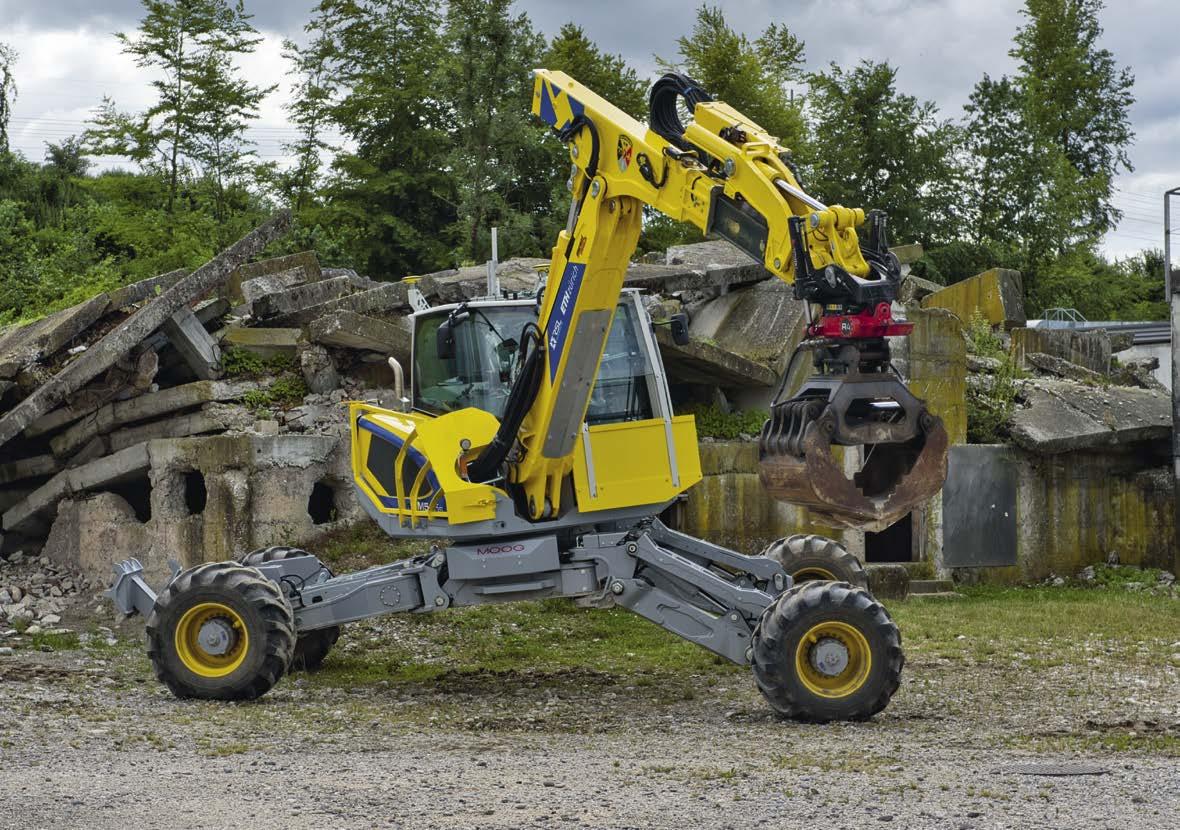
The SDRC launched the “ARCHE - Swiss Robotics for the Disaster Relief of the Future” working group to aid enquiries in this field.
potential threats from robots. The event has been taking place annually since 2018 – and has been growing steadily. With around a hundred students, researchers and developers in the training village at the same time, along with a variety of robotic demonstrators, ARCHE is the largest Swiss event for examining robotic applications.

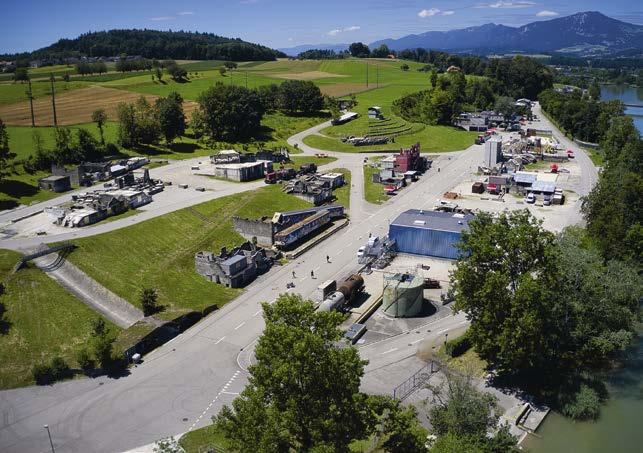
The ARCHE working group is also increasingly investigating other applications as well as disaster relief. In 2019, defence from minidrones was added as an area and since 2020 recovering wounded people and clearing munitions has been examined even more intensively. Thanks to ARCHE,
the application maturity of specific robot technologies can be assessed.
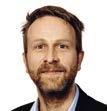
From today’s perspective, the broad technology of mobile robotics is still not mature enough to provide significant assistance to first responders when recovering people or saving lives. However, in disaster relief in particular, robots offer major potential for supporting rescue services quickly and safely. It is essential that this potential is exploited in the future.
The ARCHE working group is also increasingly investigating other applications as well as disaster relief.

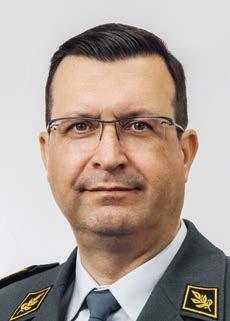
How do you find the cooperation with armasuisse Science and Technology (S+T)?
The cooperation is excellent and it means a lot to me.
What skills particularly characterise armasuisse S+T and make them unique?
For the Armed Forces, it is important that the decisions made by armassuise S+T are based on hard facts. Physical conditions cannot be explained away. In this respect, sound scientific knowledge and the findings of armasuisse S+T from tests and trials are indispensable.
What hopes do you have for armasuisse S+T?
Research requires a plannable budget so that the projects, which often run for several years, lead to effective knowledge. I hope that armasuisse S+T will be able to rely on adequate and stable research credit. armasuisse S+T is dependent on cooperation with universities and industry. I hope for an even greater acceptance of armaments research by the civilian population for armasuisse S+T, whose projects serve the security of the Swiss population as well as research institutions in Switzerland.
Can you name a successful achievement in your daily work which you have experienced thanks to your cooperation with armasuisse S+T?
It really isn’t easy to pick out just one achievement – there are so many. One recent example is the fast and very effective work of Dr Michael Jäger, which made a considerable contribution to modelling infections as part of the Armed Forces’ deployment to combat the consequences of the coronavirus pandemic. His models, developed with universities and ETH Zurich, made a significant contribution to the solidity of our decisions and filled a clear vacuum at federal level.

What skills and abilities characterise armasuisse S+T in particular? armasuisse S+T has very knowledgeable experts who are genuinely interested in the scientific results of a study. If a problem occurs during a project, the armasuisse team is very professional and focused on fixing it. The administrative conditions of an armasuisse project stand out in today’s world of research for their simplicity and common sense. That is tremendously refreshing today.
How do you find the cooperation with armasuisse S+T?
The cooperation is very good. armasuisse S+T has optimum conditions for achieving good results. I also appreciate the conferences which armasuisse S+T organises: You find out what is happening in other projects, which means that the cooperation gains in depth.
What have you been able to gain personally as well as for your area thanks to the cooperation with armasuisse S+T?
Through one of armasuisse S+T’s conferences, a large company became aware of one our antenna designs. This armasuisse project was then followed by an Innosuisse project with Ruag. In general, the research topics are relevant and interesting. armasuisse S+T also supplies results that are of interest in international research and lead to good publications.
What hopes do you have for armasuisse S+T?
I hope that armasuisse S+T continues to hire knowledgeable staff who are interested in results. And that armasuisse S+T will continue to use its resources for good research without developing into a bureaucratic monster, which unfortunately happens all too often today. I wish armasuisse S+T all the best for the future!

How has the work of armasuisse S+T led to success in your own field?
Thanks to armasuisse S+T, it has been possible to explain and relate trends in armaments technology in detail in various basic documents, allowing decisions on further developing the capabilities of the Armed Forces in the air and on the ground to be placed on a solid scientific basis. Most recently, considerations on the use of protected resources on the ground were checked and validated in a collaboration between Armed Forces Planning, armasuisse S+T and a company based in Switzerland using sophisticated simulations which resulted in an unprecedented approximation of reality. We want to develop the systematic use of this capacity in future military planning.
What skills characterise armasuisse S+T and make it unique?
armasuisse S+T offers a wide range of skills for overall military planning. These include anticipating and assessing technological trends and a long-term focus on research in selected areas. In addition, armasuisse provides scientific support in basic planning through its expertise and descriptions of trends. Finally, it supplies experimental reviews of military requirements in procurement projects through proof-of-principle tests. All in all, the many different researchers with their broad knowledge and experience make armasuisse S+T what it is.
How do you find the cooperation with armasuisse S+T?
The cooperation is at a very good level today, because the experts at armasuisse S+T have been involved early on in overall military planning. There are also regular exchanges on particular areas of research: specialised conferences are held, research studies are presented and methods for reviewing concepts are developed and expanded jointly. Armed Forces planning benefits fully from the research programmes and skills of armasuisse S+T. Basic planning, in particular in developing the Armed Forces, is heavily based on the close cooperation with the various specialist areas in armasuisse S+T.
What hopes do you have for armasuisse S+T?
In future, we would like to see even more innovative solutions in order to further develop the operational capabilities of the Armed Forces. Firstly we need to enter into a more specific dialogue earlier on with armasuisse S+T for this purpose, long before the redundancy of main capability-relevant systems becomes clear. Secondly, we need to involve armasuisse S+T even more intensively in our conceptual approaches, so that the focuses of research can be defined more specifically in future. In addition, we would like to take more advantage of the skills of armasuisse S+T in order to verify our thinking and find prompt and innovative solutions to the challenges of operations research.
Radio dead spots are still part of our everyday life despite the latest technology. One of the main reasons for this are reflections that occur, for example, in mountains. So with new radio systems, tests have to be carried out early on to see if they can cope with the conditions of deployment. To do this, we bring the whole of Switzerland into the laboratory.
Text: Dr Christof SchüpbachThey are becoming rarer, but still exist: dead spots in mobile communications coverage. Probably everybody has at one time or another searched desperately for a place with better reception, stretching and reaching out just to get one more bar of signal strength from the network display. Likewise, everyone is surely familiar with the situation where, despite sufficient bars on the display, the data is transmitted at snail’s pace or not at all. It is the goal of every network operator to avoid these dead spots. That’s why it is important to understand what exactly causes them.

Dead spots can occur in any radio system. Even military radios cannot reach the receiver under certain circumstances. While users of civilian mobile communications can find a location with better reception if necessary, there is less scope for this with military systems. In Switzerland, the topography of the landscape plays an important role for radio connections. Obviously, it is difficult for radio signals to travel from one valley to the next, as high mountains tower between them. But this is far from being the only reason for difficult radio
communications. To transmit data, modern radio systems first digitalise the information to be sent and code it in what is known as transmission symbols. A symbol contains a particular unit of information and is comparable to a word of a language. Depending on the transmission speed, these symbols are of varying duration. On their way from the transmitter to the receiver, the signals are reflected off objects like mountains and houses in all directions. As a result, they arrive at the recipient with a greater or lesser delay, like an echo, depending on the path they have travelled – we call this multipath propagation. If the difference in the arrival times of the symbols is so great that consecutive symbols overlap, it is difficult for the receiving device to decipher what the intended symbol actually is. If there are too many misinterpretations, a message will be lost, as it can no longer be reconstructed correctly. This is why the maximum tolerable delay time for a transmission symbol is a key performance indicator of a radio system.
In this way, the Swiss mountains not only get in the way of radio communication, they also act like enormous mirrors

Radio signals are reflected off of mountains and so arrive at the receiving unit with a delay. This can lead to connection problems.
The Communication research programme is building up skills for specialist evaluation of technologies for future military communication systems. This is becoming increasingly important, especially due to the ever shorter development cycles of information and communication technologies. Systems are becoming increasingly networked today and are increasingly dependent on communication technologies.
The fields of expertise for the research programme extend from integrated mobile communication networks to methods for efficient use of electromagnetic space and comprehensive modelling and simulation of communication networks.

The measuring system can be installed in a Puch off-road vehicle specially equipped for measuring. It consists of a transmitter which emits a specially designed signal, and a mobile receiver station which measures all signal components and the delays in these.
Channel emulators are able to simulate a radio propagation channel with any characteristics. The radio systems are connected with the emulator by cable to do this. The radio signals then run through the emulator instead of through the air. The emulator can be set to delay and weaken the signals in any way desired, simulating the real propagation conditions which previously had to be measured.
for the signals. Echoes off the distant Alps are particularly problematic in the central plateau. Signals reflected by the Alps are particularly strong because of the sheer size of the mountains, and long delays occur because of the great distances. Topographical conditions like these are encountered relatively rarely elsewhere in the world, so it comes as no surprise that they bring many radio systems which have been developed in other countries to their knees. It is therefore vital that new radio systems are tested as early as possible during their procurement and development to see how well they work in Switzerland.
To test radio systems, it would appear at first glance that the obvious thing to do is conduct field tests in a real environment. However, this has several significant disadvantages compared with laboratory tests. In a field test, various important parameters can only be controlled to limited extent or not at all, and it can be hard to reproduce results. However, it is essential that tests can be repeated under the same conditions to obtain reliable results. These problems do not apply in laboratory tests, as the conditions are controllable. Tests are reproducible and the personnel and material expenses low in comparison with field tests. However, the real challenge is to make the propagation conditions for the signals in the laboratory as realistic as possible.

Propagation conditions for radio signals can be recreated in the laboratory using what is known as a channel emulator. The device is set to defined delay times and the strength of the various different signal components. The radio signals under test are then fed by cable from the transmitter to the emulator, which changes the signals accordingly. From there, they reach the receiver via another cable. This makes it possible to determine the precise conditions under which the connection breaks off or is considerably impaired.
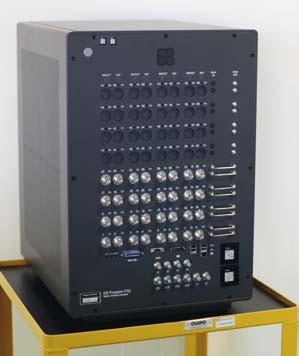
In order to capture real propagation conditions in Switzerland, as part of the communication research programme we have developed a system for measuring radio channels. This channel sounder sends a signal specially designed for this purpose, which is received at a measurement station. Using the received signal, the arrival time and the strength of each reflected signal component can be determined and the characteristics of the channel precisely measured.
The measurements clearly show where and why connection failures occur. They confirm that, particularly in the central plateau, strong reflections on the Alps and the Jura mountains create long propagation delays for signal components. The findings obtained using the channel measuring system and the channel emulator are a great help in evaluating radio systems. For example, when new radio systems are being
Propagation conditions for radio signals can be recreated in the laboratory using a channel emulator.
procured and developed, laboratory tests can determine early on whether they will have major problems due to the unique landscape.
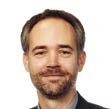
In addition to their application in laboratory tests, the findings of this research have further benefits for research and development. They can be used, for example, in improving computer models: land surveying is becoming ever more accurate and very precise three-dimensional models of the landscape and even buildings are now available. This data can be used to predict the propagation of radio signals using computer models. Models are always a simplified depiction of reality and measurements are very valuable to improve their accuracy. Computer models, on the other hand, enable precise planning of radio networks, so that the desired coverage can be achieved as well and efficiently as possible.
Knowledge about the channels helps considerably when optimising new signal forms. Each waveform has a high number of parameters that need to be optimised separately for each situation and application. Many of these depend greatly on the propagation conditions. If the delay times are known, the waveform can be adapted to the specific channel and optimised. Latest generation waveforms, such as those planned for 5G, are more resistant to multipath
propagation. More has to be invested in signal processing though, but this has become possible as processor performance is always improving.

Thanks to the measurements made to date, some of the locations which are difficult for radio propagation have already been established. The measurement results are being continuously expanded by new locations and frequency ranges and stored in databases. Soon we will really be able to say that we have brought Switzerland into the lab.

The findings obtained using the channel measuring system and the channel emulator are a great help in evaluating radio systems.DR CHRISTOF SCHÜPBACH Head of research programme and Deputy Head of specialist area Christof Schüpbach has been working at armasuisse Science and Technology since 2012 in the Communication and Electromagnetic Protection specialist area . To date, he has worked in projects in radio intelligence and electronic warfare, radio technologies and passive radar. He is internationally active in several NATO working groups and as an associate editor the IEEE magazine. He took over running the research programme in 2020.
Results from measurement runs in the region of Thun (top and centre) and in Vaud (below). The time of the measurement is shown on the vertical axis. The coloured points show the delay with which a signal component arrives at the receiver. The further to the right a point appears, the greater the detour the signal had to take. The greatest delays were up to 160 microseconds, equivalent to a detour of almost 50 kilometres.




When the number of infections and deaths caused by the new coronavirus began to rise in Switzerland, it was important for the Swiss Armed Forces to get quickly an overview of the current situation. To plan an optimal deployment of the Swiss Armed Forces, the needed resources had to be anticipated. This task was taken on by the Operational Research working group of the Joint Operations Command, newly formed for the coronavirus pandemic, together with the Operations Research and System Analysis (ORSA) group of experts.
Text: Dr Michael Jäger
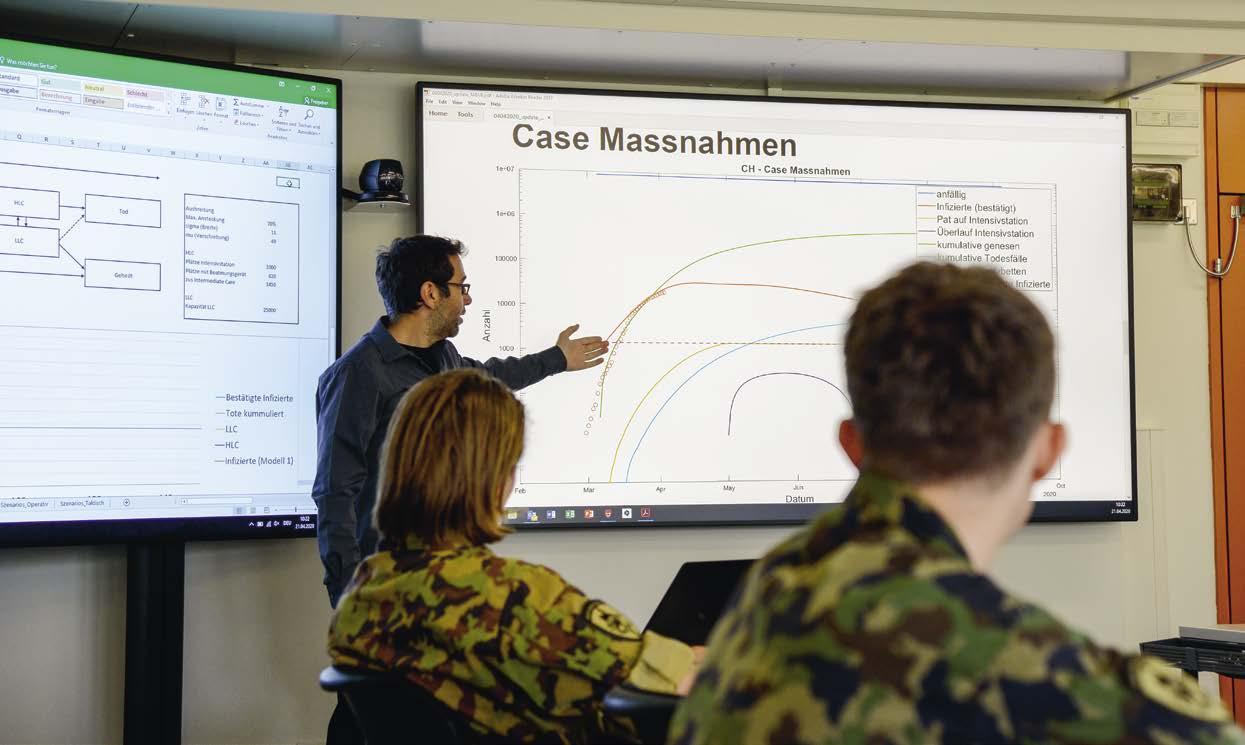
When the Federal Office of Public Health FOPH reported the first coronavirus infections in February 2021, the Swiss Armed Forces acted fast: a short time later they launched the Operational Research working group, with the aim of optimising the planning and deployment of human resources for upcoming operations to curb the Covid-19 pandemic. The temporary group of experts enjoyed wide support from armasuisse Science and Technology (S+T). Soon after the team was created a request for support came in, and only a few hours later the first S+T employee began work on simulating the effects of the measures taken by the Federal Council against the spread of the Covid-19 virus in Switzerland and – even more important – at cantonal level.
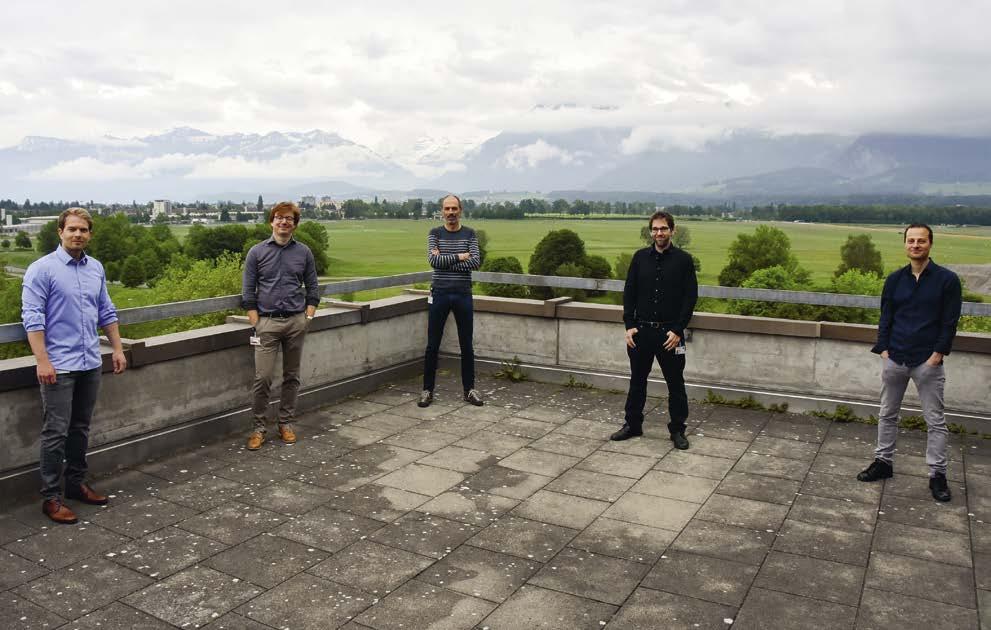
The working group first collected information and data on the latest situation from various different data sources, such as the number of confirmed infections and occupancy of hospital beds, to obtain a more comprehensive picture of the current situation. In the next step the team used this data to create both optimistic and pessimistic future scenarios of the further progression of the spread of the virus and the staffing and material resources available in the Armed Forces and the healthcare system.

A forecasting tool developed by the working group and armasuisse was used as a basis for creating these scenarios. One of the most important side effects of formulating and developing models jointly is that you have to focus on the
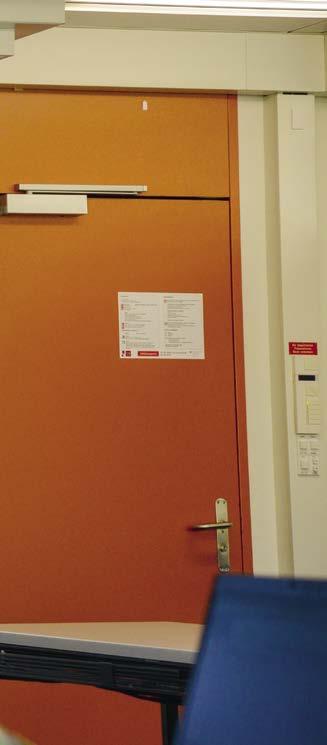
The Swiss Armed Forces launched the Operational Research working group to optimise planning and deployment of human resources to curb the pandemic.
The working group developed scenarios to assess how strongly the measures imposed would impact the containment of Covid-19 infections.
most important aspects through in depth and detailed discussions to ultimately reach a shared understanding of the problem. This was the same during this collaboration.
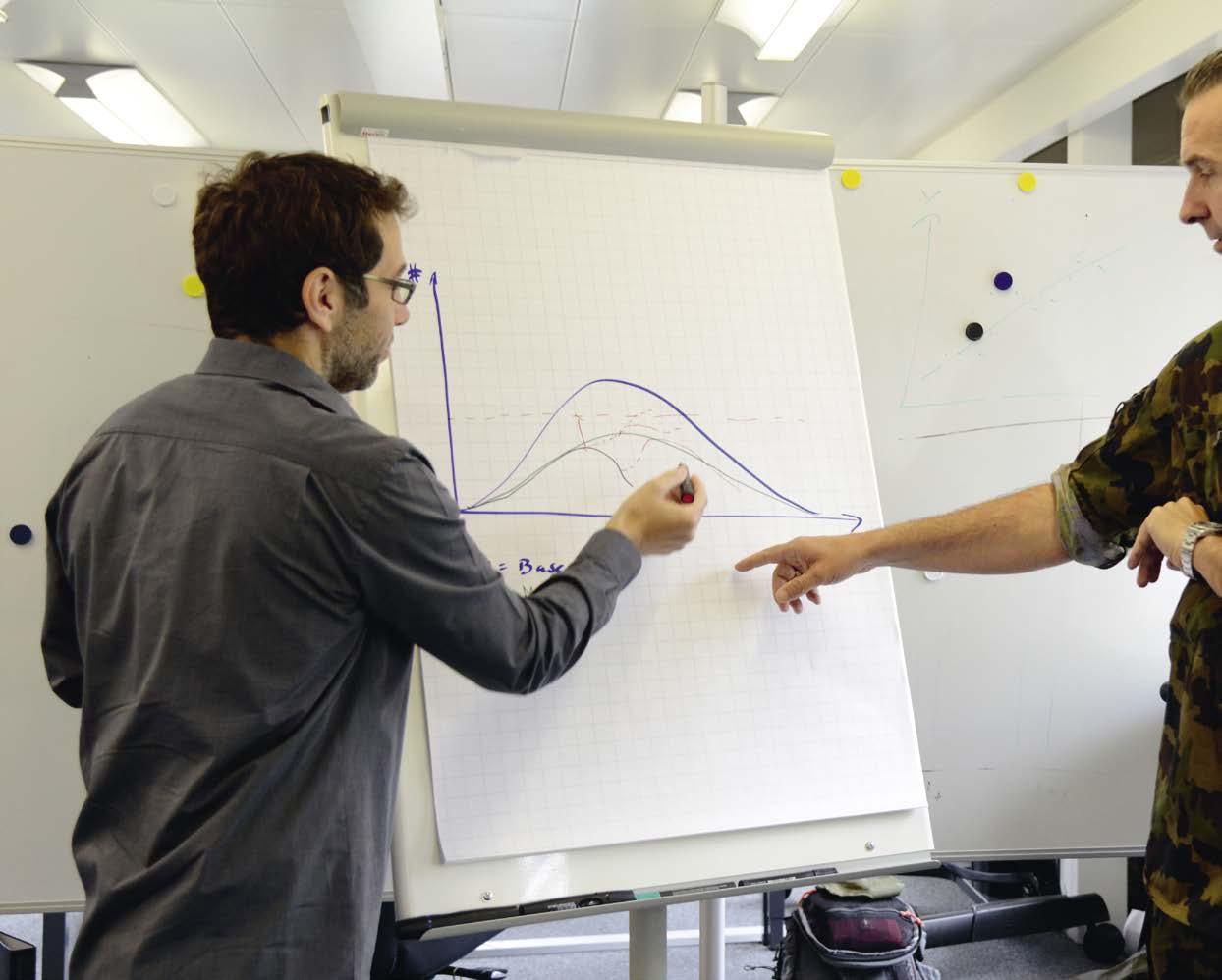
Thanks to the jointly developed understanding, the working group was able to develop scenarios to assess how strongly the measures imposed by the FOPH, in particular border closures, restricted mobility and isolation at home, would affect containment of Covid-19 infections. In addition, it was important to predict a possible overload of the healthcare systems in the individual cantons, so that the Armed Forces could dispatch their own staff in good time.
In general it is scarcely possible to validate, i.e. confirm, the models used and their results by directly comparing them with reality. For this reason, models from ETH Zurich, the University of Basel and the University of Bern were used to check the future scenarios calculated and created internally. Models on the same subject may be based on different assumptions about the spread of the virus, resulting in different calculations. This is often hard for outsiders to understand. However, different models are very valuable for decision-makers, as they reveal “blind spots” and aspects that have not been considered.

Cooperative discussions to develop a shared understanding of the problem.
Forces – were involved from the beginning and the model was jointly expanded in small stages. All those involved supplied a part of the solution to the puzzle – whether it was data processing, visualisation or programming. The Operational Research working group set up a task force room for regular joint dialogue on site at Papiermühlestrasse 20 in Bern, which substantially facilitated the consistently constructive cooperation, even when times were hectic.
it’s

Modelling possible and different progressions of the Covid-19 crisis in terms of nature, intensity and duration enables military leaders to create and adapt ongoing contingency planning for their force generation and force deployment. The working group compared the various scenarios using real data. The model therefore improved daily and became increasingly relevant for further planning of resource deployment. This enabled the Swiss Armed Forces to react appropriately to the large number of deployment requests and plan the deployment of troops. The key success factor was the close and continuous cooperation between the end-users and the model developers: the end-users – the Swiss Armed
The working group set up a task force room for regular dialogue in Bern, which substantially assisted constructive cooperation.
What are the key insights now from this extraordinary and close cooperation between the scientific community and the Armed Forces? The Neue Zürcher Zeitung wrote that “a rough model assessment with assumptions disclosed is still much better than the realistic alternative – decisions based on gut feeling with no assumptions disclosed” – (Hansueli Schöchli, 21 April 2020). However, handling crises using simulation suggests four behavioural patterns in particular. “Firstly: various different models should be used to better support decision-making and reflect the uncertainties. Secondly: you should disclose the model calculations on which government decisions are based, so scientific discussion can progress. Thirdly: as much data as possible should be collected, to continuously improve the quality of models. And fourthly: you should show humility.” (Hansueli Schöchli, 21 April 2020). To the best of its knowledge and belief, the Operational Research team based its actions on these four principles for the entire period of the deployment. In times of unforeseeable challenges and sudden uncertainties, this was the key factor for coordinated action to successfully managing such crises.
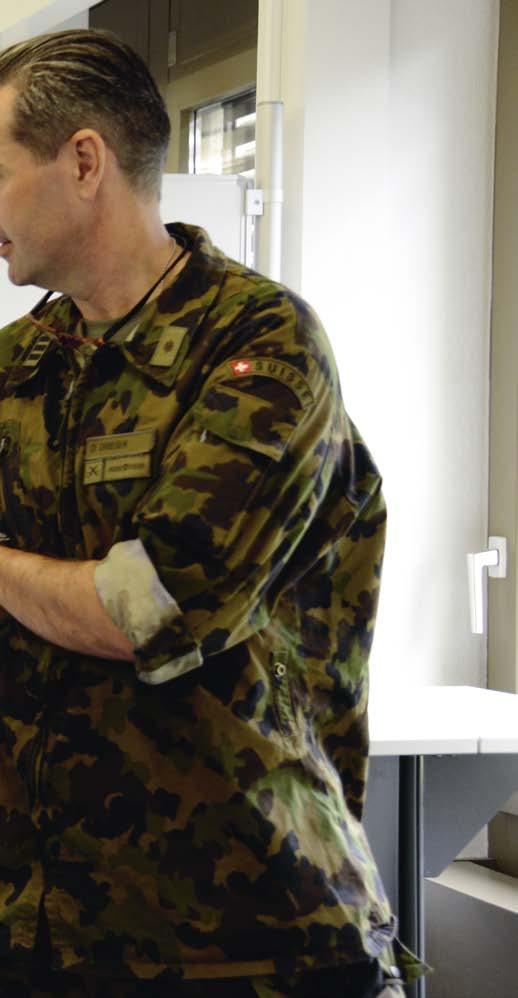
Dr Michael Jäger is a scientific project manager in the Research Management and Operations Research specialist area. In his day-to-day work, he deals with modelling and simulations in Operations Research and system analyses. He is also sub-project manager of technology in the Bodluv project (extended-range ground-based air defence). On 1 April 2021 he had been due to move to another job at armasuisse in technology management. But Covid-19 put paid to that plan – the job change had to wait several months. During the uncertain period of the coronavirus pandemic he worked closely with Joint Operations Command of the Swiss Armed Forces on solutions for managing the crisis.
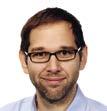

Fighter pilots are under a high degree of stress during their missions. Oxygen deficiency can lead to dangerous situations. The Aeromedical Centre (AMC) of the Swiss Air Force has developed a procedure with armasuisse Science and Technology for minimising the risks of oxygen deficiency in flight. An interview with Mathias Aebi, PhD student in high altitude physiology at the AMC in collaboration with the Institute of Sport Sciences (ISSUL) at the University of Lausanne.
Interview with Mathias Aebi, conducted by Dr Philip Noser
Using the hypobaric chamber, it is possible to simulate conditions at different heights, in particular oxygen deficiency, which can be dangerous for pilots during their missions.
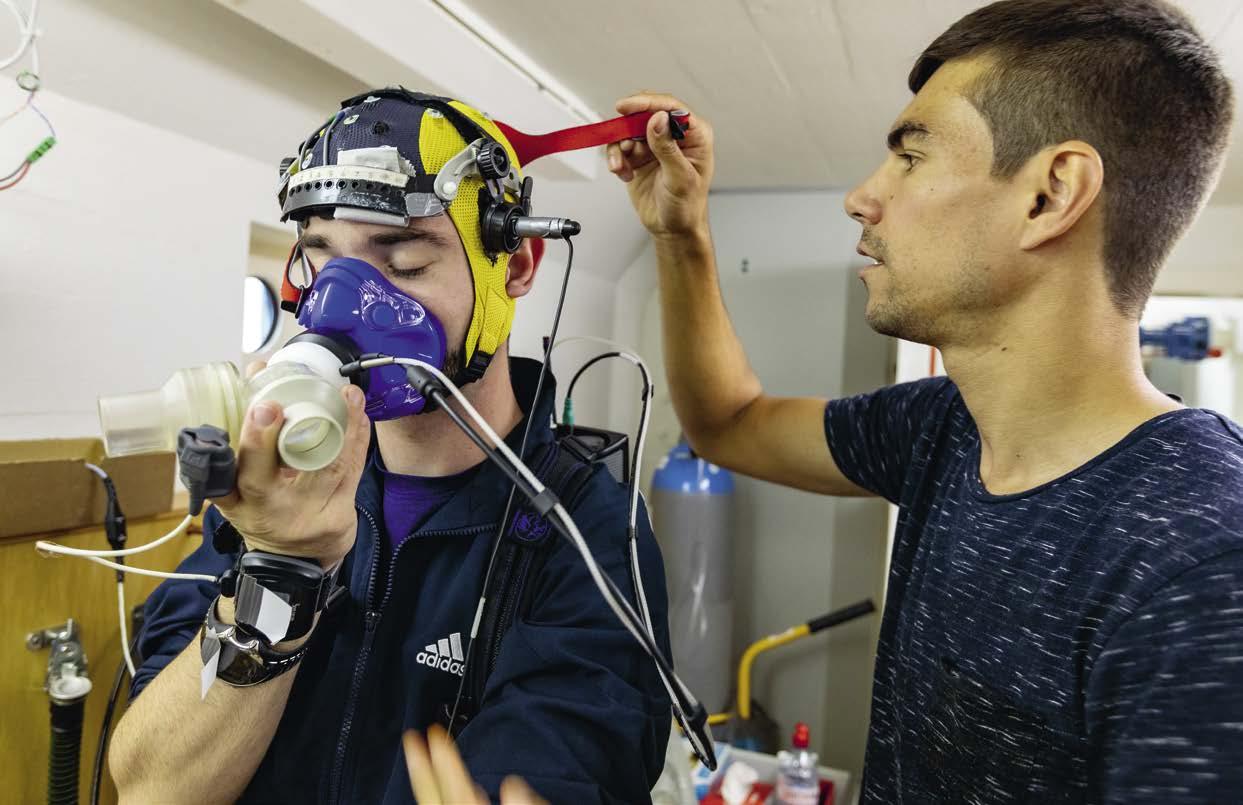
Mathias Aebi, what makes it particularly interesting for you to do research on behalf of armasuisse at the AMC for the Air Force?
The Air Force has the only hypobaric chamber in Switzerland. Using this, it is possible to simulate conditions at different heights, in particular oxygen deficiency, which can be dangerous for pilots during their missions. As an example: The chamber simulates an ascent to an altitude of 5,500 meters in just 1.5 minutes. This imitates a rapid decompression, i.e. a barometric pressure decrease.
What questions do you investigate at the AMC?
I am interested in the effects of oxygen deficiency, called hypoxia, and low pressure, known in medical terminology as hypobaria, on different human physiological reactions and cognitive functions that can occur during a flight.
The air pressure found at mountain altitudes corresponds to hypobaria. It is lower than on the flatlands – the higher you go, the “thinner” the air. We simulate this oxygen deficiency at various altitudes in the hypobaric chamber by lowering the barometric pressure. Due to this decrease in atmospheric pressure, a person can absorb less oxygen from the lungs into the bloodstream.
In normobaria, on the other hand, oxygen deficiency occurs with normal air pressure, as can be found on the plains. Oxygen deficiency is caused by the decrease in oxygen concentration. We are investigating the physical reactions triggered in people by the the loss of atmospheric air pressure for the same simulated height. For example, in the hypobaric chamber, we take measurements at a simulated
Mathias Aebi fitted the measuring devices on Tim Merriam’s head before the experimental test on the bicycle.
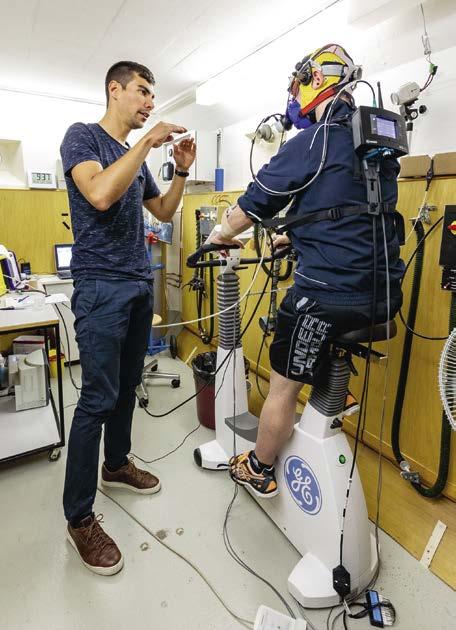
altitude of 5,500 meters with hypobaria or by inhaling air with only 11% oxygen (instead of the normal level of just under 21%) with normobaria.
Pilots are not usually exposed to hypoxia, which is why we are also interested in the possible effects of low pressure, called hypobaria, with normal oxygen content, also known as normoxia. So we also compare a status in normobaria normoxia (NN-) at a height of around 440 metres above sea level with 20.9% oxygen as well as a status in hypobaria normoxia (HN-), which corresponds to the status in the cockpit of an aircraft. At the AMC we also try to assess the potential impact of a drop in barometric pressure with normoxia.
Test subject Tim Merriam during a simulated ascent to 5,500 meters with 100% oxygen through the mask - under medical supervision by Andres Kunz (left, Director and Physician at the AMC).


Mathias

The Aeromedical Centre in Duebendorf is the Swiss centre of expertise for medical and psychological assessment of men and women with regard to safety and performance in military and civil aviation, transport and management. Its task is to evaluate the aptitude and health of professional air force pilot candidates. Through its strict selection procedures and intensive support for the pilots, it aims to ensure that missions are accomplished in the challenging environment of military aviation and to make flying safer. Apart from pilots, the AMC’s customer groups include other specialists such as para scouts, drone operators, systems operators and general staff candidates. The AMC conducts applied research in collaboration with armasuisse, including that of Mathias Aebi.
The AMC comprises the sections of aviation medicine and aviation psychology and the AMC director’s staff. A team of some 35 specialists includes aviation physicians, psychologists and medical experts, sports scientists and physiotherapists. The AMC is one of the Air Force's decisive mission-relevant terrains, and is recognised as an aeromedical centre in accordance with the regulations of the European Aviation Safety Agency (EASA) and the Federal Aviation Authority (FAA).
We are investigating the physical reactions triggered in people by the loss of atmospheric air pressure for the same simulated height.Tim Merriam during the concentration test. Aebi gives Tim Merriam final instructions.

In order for pilots to be able to recognise and correct normobaria in time, we train Swiss jet pilots on a flight simulator in Payerne. On the other hand, to identify the signs of hypobaria, they are exposed to it once during their pilot training under the supervision of medical staff at the AMC in the special hypobaric chamber. It is important for pilots to know the possible signs and consequences of oxygen deficiency in these two situations. They need to know how the body and the cognitive functions can regulate themselves during oxygen deficiency with and without a barometric pressure decrease.

Volunteer students from the Zurich University of Applied Sciences in Winterthur took part in the study. We assessed subjects’ concentration capacity and the symptoms that occurred during the various oxygen and pressure conditions. These tests took place during mildly intensive activities on a bicycle in the hypobaric cham -
ber. From a physiological point of view, we measured the following body responses, amongst other things: blood oxygen saturation, heart rate, oxygen supply to the brain, blood velocity in the brain, electrical activity of the brain, gas exchange, cerebral vasoreactivity to changes in CO 2 concentration, and blood pressure regulation.
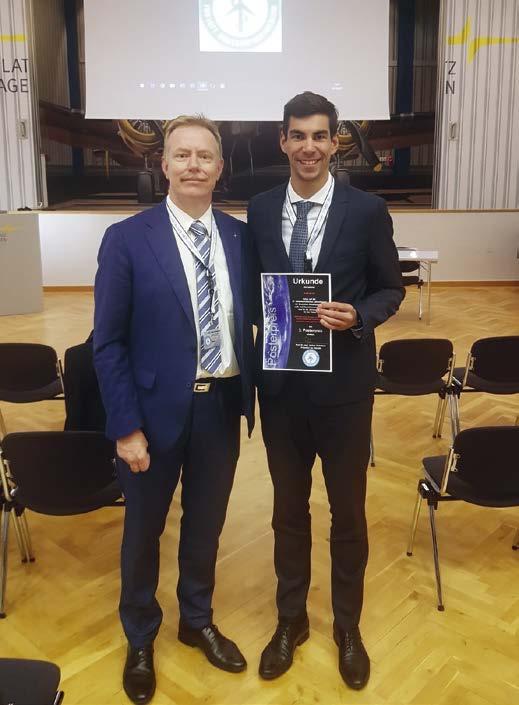
Our results show the various consequences of hypoxia and hypobaria on the physiological reactions of people in a resting state. The physiological reactions during exertion such as riding a bicycle appear to be more strongly pronounced with HH than with NH, where lower oxygen saturation and higher heart rate occurs at the same intensity.
The results show that oxygen deficiency at low air pressure can have more severe consequences than with normobaria. This confirms that hypobaria amplifies the effect
It is important for pilots to know the possible signs and consequences of oxygen deficiency in these two situations.
of oxygen deficiency. It is therefore essential for pilots to be aware of their symptoms and physiological reactions to normobaric and hypobaric hypoxia, if these occur during a mission.
It was the variety of symptoms which a person can exhibit if they are exposed to acute hypoxia without prior acclimatisation. It is impossible to predict how a pilot will or can react if symptoms of oxygen deficiency occur. Some of them will feel ill or very tired, while others will feel slightly or even very euphoric. It is particularly important to make the pilots aware of the various different symptoms of oxygen deficiency that can occur in people in different situations, so they can identify them quickly if they occur in flight.
First and foremost we perform applied research. This extends our knowledge on the effects of hypoxia and hypobaria to the physiological regulation of humans when flying. The results of the experiments in the hypobaric chamber serve the purposes of the Swiss Air Force and the aircraft pilots. Thanks to the research and results of the AMC, the Armed
Forces can continuously adjust the training of their military pilots and prepare them for potential difficulties and risks.
I present the results at international scientific conferences, for example, at the Annual Scientific Meeting of the Aerospace Medical Association in the USA. I also received an award from the Aerospace Medicine Student and Resident Organisation Scientific Committee for young scientists for the research on oxygen deficiency. In addition, there are publications in various international scientific journals where we present our results to the scientific community for validation and appraisal.
The AMC cooperation with armasuisse will continue in future. We are planning exciting projects, such as assessing team performance in challenging socio-technical systems. The findings from this research are to be transferred and implemented in practice. These may also be incorporated into new or adapted army regulations.


Philip Noser’s activities include suitability and aptitude tests for candidates, training and supervising pilots and the other customer groups of the AMC, as well as crisis intervention and support for affected people and relatives following an accident.
–
The symptoms of oxygen deficiency at low air pressure, known as HH conditions in medical terminology, appear to be more severe and diverse than with oxygen deficiency at normal air pressure, called NH conditions. With some subjects we had to terminate the HH condition earlier due to attacks of nausea and low blood oxygen saturation (around 60% compared with 99% in normobaria).
– Ability to concentrate is maintained at 3,000 meters above sea level under HH conditions. However, this decreases at 5,500 meters under both NH and HH conditions. A direct relationship can be identified between blood oxygen content and the ability to concentrate.
– The oxygen supply to the brain is reduced with hypoxia and appears to be lower under HH conditions than under NH conditions.
– At 5,500 meters, subjects displayed greater fatigue than at 3,000 meters. Brain waves from electroencephalography confirm this intellectual fatigue.
– Under HN conditions, ability to concentrate capacity and physiological parameters are only slightly changed compared to NN conditions.
Mathias Aebi completed his studies as a sports instructor and scientist at the University of Lausanne (UNIL) in the department of the Institute of Sports Sciences (ISSUL). His master’s thesis looked at the physiology of movement in a hypoxic environment, in other words, moving when there is little oxygen.

The results of this thesis motivated the experts at the AMC to launch a collaboration between the AMC and the University of Lausanne UNIL. armasuisse Science and Technology as the authority responsible for defence research at the DDPS, created the commercial framework conditions for this to happen.
As a PhD student at the AMC, Mathias Aebi was able to test several different subjects in a hypobaric chamber for their reactions to oxygen deficiency.
Mathias Aebi is working on his dissertation with Professor Grégoire Millet (University of Lausanne) and his supervisor Dr Denis Bron (Head of Aviation Medicine at the FAI).
The bullet-proof vests of the Swiss Armed Forces contain high-performing but fragile ceramic plates. These can be damaged by faulty handling; for example by dropping a plate, cracks may occur which considerably reduce ballistic protection, even if the defect is invisible to the naked eye. To ensure the safety of members of the Armed Forces, it is important to have a test procedure for assessing the condition of the plates that can be used reliably and quickly.
Text: Dr André KochProtective clothing has always been part of a soldier’s equipment. The development from the oldest known armour to the newest bullet-proof vests shows that protective clothing has become increasingly effective.
But now recruit Hartmann, who is about to enter recruit school, is asking himself whether his body armour will really offer the protection it promises.
A modern bullet-proof vest protects the chest, abdomen and back. A vest with several layers of high-performance synthetic fibres such as the fabric aramid is sufficient against handguns. However, synthetic fabric does not offer sufficient
protection against more powerful firearms, such as an assault rifle or a Kalashnikov. For this, ceramic plates have to be inserted into the protective vest.
Ceramic is an extremely hard material: a ceramic plate just a few centimetres thick can stop a projectile from an assault rifle. However, it is also very brittle. A shock may induce cracks in the plate, reducing its ballistic efficiency.

armasuisse S+T has launched a research project to reliably assess the status of ceramic protective plates. This will ensure that the body armour offers members of the Armed Forces the protection they expect.
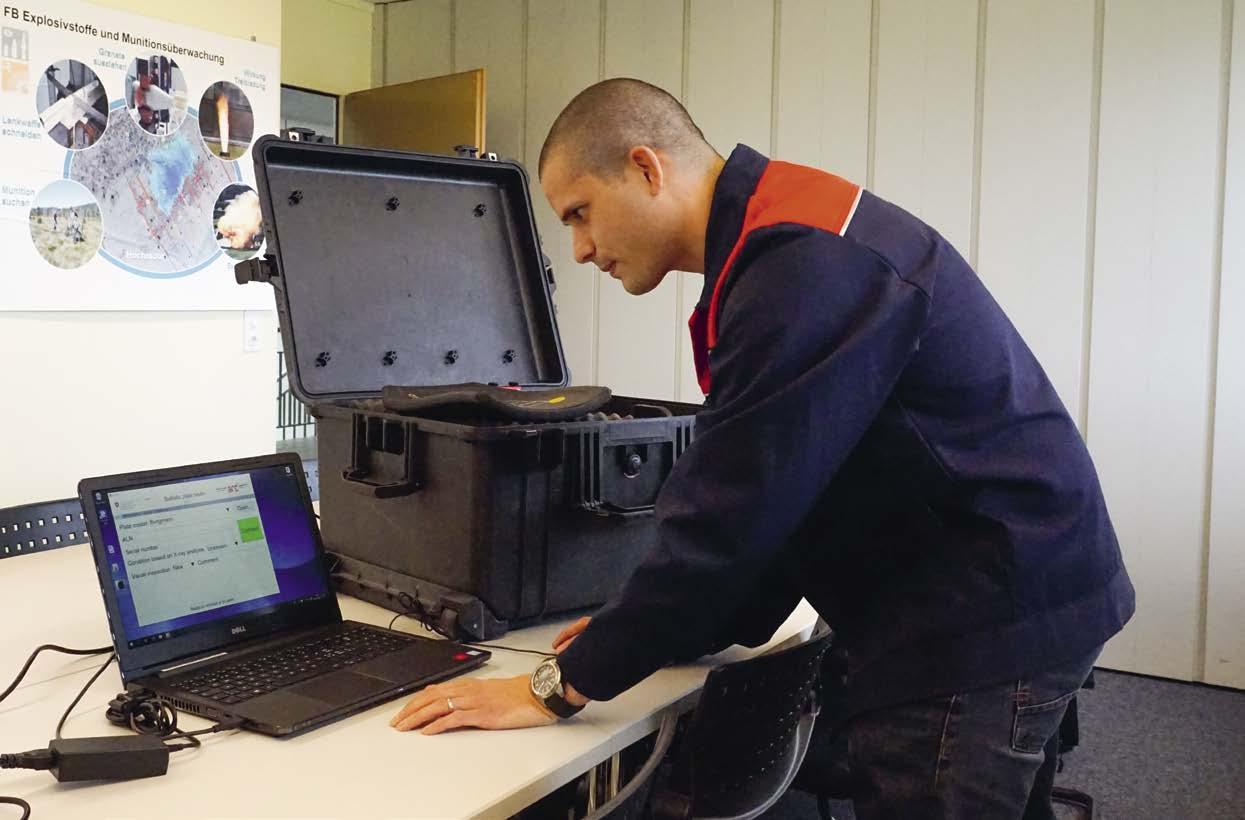
Left: the Dendra armour from the 15th century BC, the oldest known western armour; centre: German armour from 1918; right: the armament of the Swiss Armed Forces with bullet-proof vest (2018).

Depending on the alignment, position and size, a break can be difficult to recognise on an x-ray image.
The condition of ceramic protective plates is usually assessed using x-ray images: damages to the plate, such as cracks, appear in high contrast on the x-ray, while they often remain invisible during visual inspection. This system of checking is effective, but expensive and time-consuming due to the radiation protection measures. And depending on the alignment, position and size, a break can be difficult to recognise on an x-ray image. For these reasons, an alternative method of inspection is required. Dr David
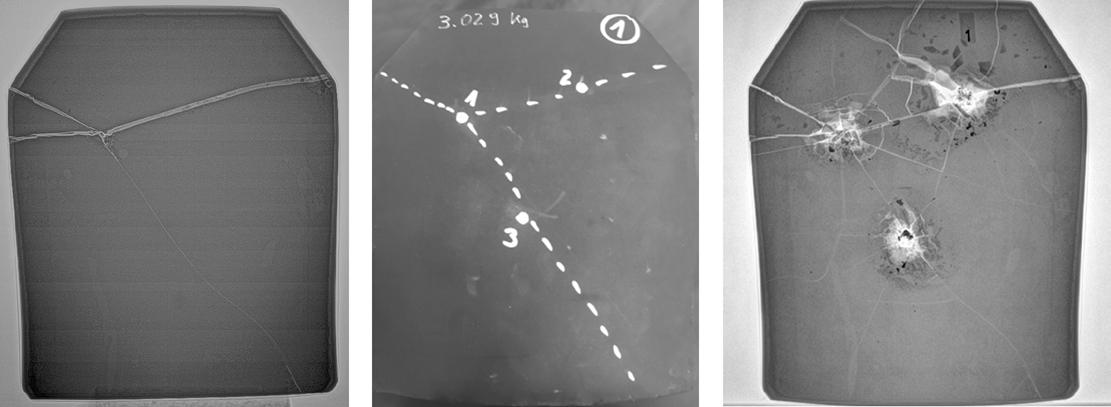
Thévenaz and Philippe Drapela from armasuisse are currently developing an acoustic assessment method together with the School of Engineering Haute Ecole Arc in Le Locle, which will simplify and accelerate the process for testing ceramic protective plates. Their idea is to make the plate vibrate. Defects such as cracks alter its vibration pattern. If a ceramic plate is lightly tapped by a finger, the sound emitted accurately reflects its condition: on the one hand, if it is intact, the sound produced is clear and pleasant; a damaged protective plate, on the other hand, generates a
the inconspicu-

noise similar to that of a cracked bell. Analysis of the acoustic characteristics allows defects to be identified rapidly, as even the smallest cracks change the acoustic signature of a protective plate.
The acoustic analysis method is universally valid

The acoustic analysis method for protective plates has several advantages. It is simple to implement, easy to operate and both fast and cost-effective to use. The image on page 44 shows one of the first demonstrators armasuisse S+T used to highlight the potential of this new analysis procedure. Several hundred Swiss Armed Forces plates of type “Plastron 96” were tested successfully. The results achieved, which were presented at international symposiums, have triggered interest from various European nations. This prompted armasuisse S+T to or-
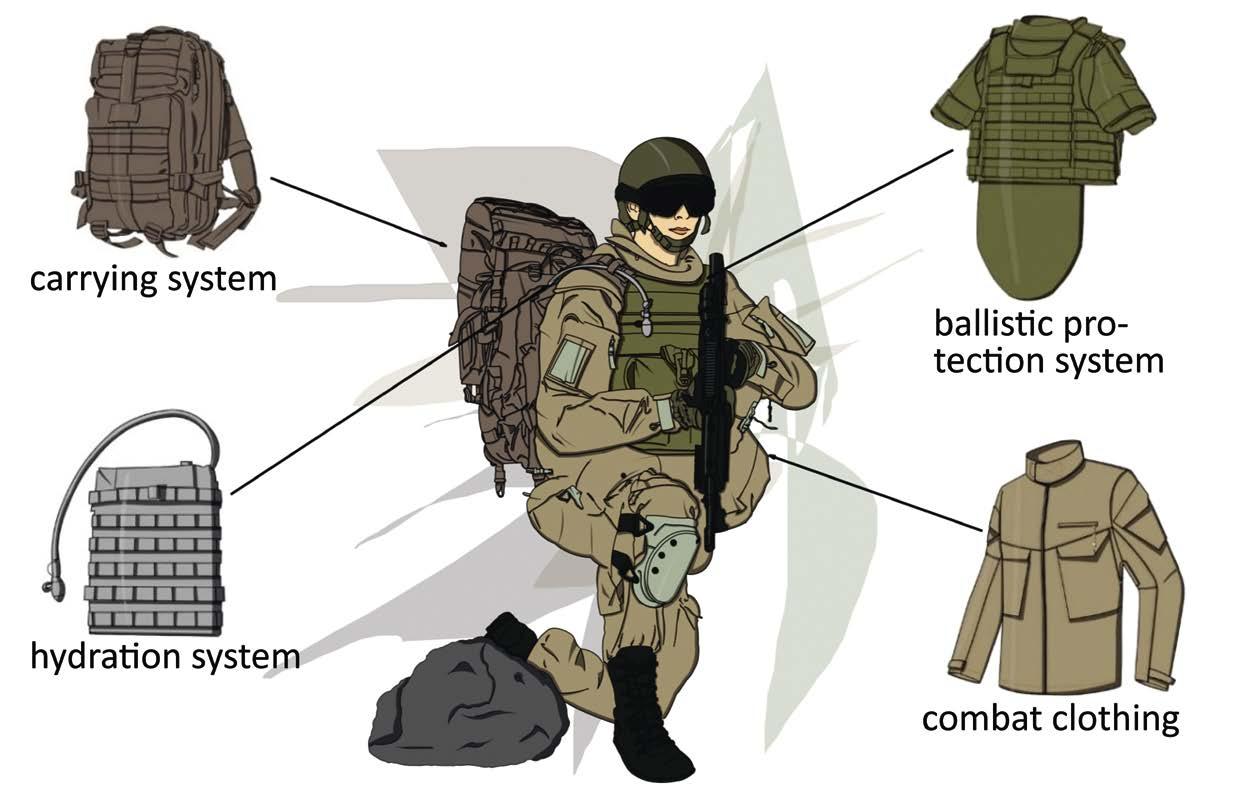
ganise its own workshop. Foreign participants were offered to test the acoustic method for controlling cracks in the protective plates used by the armed forces in their respective countries. These experiments proved that the procedure described can be applied to various plates with a high degree of efficiency. The measuring device is still in the testing stage, but further development and commercialisation by a company is entirely conceivable. The number of sensors used could be increased in the future to improve the sound recording and allow analysis of plates with very different shapes.
The findings of the acoustic analysis have to be statistically corroborated over the next few months. Once this has taken place, the new testing method will be implemented in the Swiss Armed Forces to systematically control protective plates. Each plate will be linked with its vibration spectra in a database. In subsequent checks, the data measured will be compared with previously obtained spectra. Defective plates will be recognised and exchanged or marked so they may
Analysis of the acoustic characteristics allows defects to be identified rapidly, as even the smallest cracks change the acoustic signature of a protective plate.The ballistic protection system is an important part of the Swiss modular clothing and equipment system for military operations. Depending on requirements, either a simple plate support or a traditional protective vest with corresponding collar and underbody protection can be selected.
Ballistic protection for members of the Armed Forces is guaranteed – quickly and cost-effectively!

only be used for training purposes. In this way, the efficiency of the ballistic protection systems can be guaranteed – quickly and cost-effectively!
Thanks to armasuisse Science and Technology, recruit Hartmann now knows that the protective vests deployed today are increasingly protective effective. And he also knows that, thanks to the quickly performed acoustic analysis, sound protective vests can be easily distinguished from ones that are damaged. With this reassurance, recruit Hartman can now go on duty without any worries.
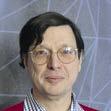
André Koch has been Head of the Impact, Protection and Safety research programme at armasuisse S+T since 2010. His programme investigates military developments in kinetic, chemical, thermal and electromagnetic weapons. Protection against the effects of such weapons – in particular ballistic protection – is an increasingly important aspect of his work.

The photo shows the anechoic chamber at armasuisse S+T. The walls of this room absorb electromagnetic waves almost completely. This unique characteristic allows the emission of electromagnetic waves or their dispersion around objects to be measured under ideal conditions. Atmospheric influences and backscattering from extraneous objects can be largely ruled out. The results achieved are therefore reproducible and comparable. This is important if the electromagnetic emission from communications and reconnaissance systems is to be characterised, but also to determine the backscattering behaviour of possible target objects. The image shows the radar measurement of a miniaturised flying object.
